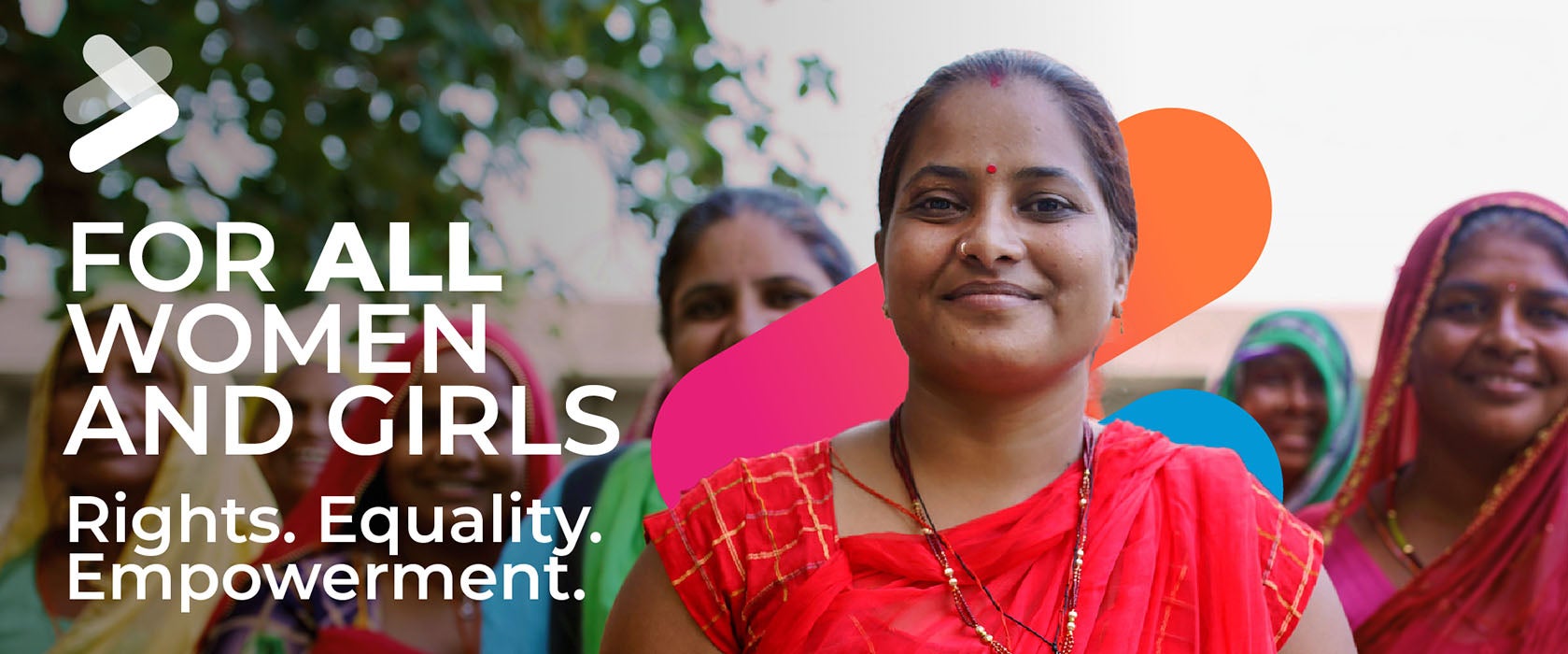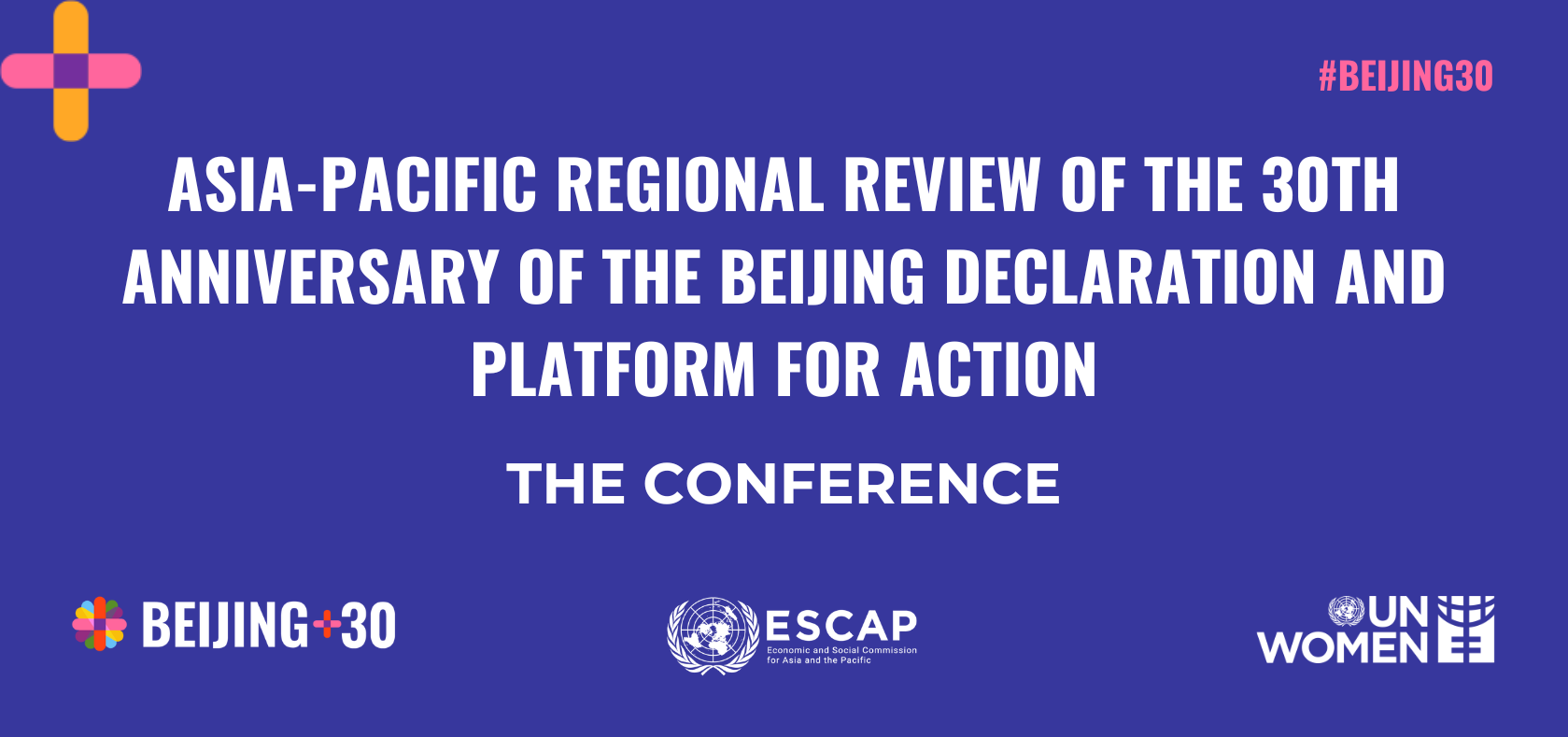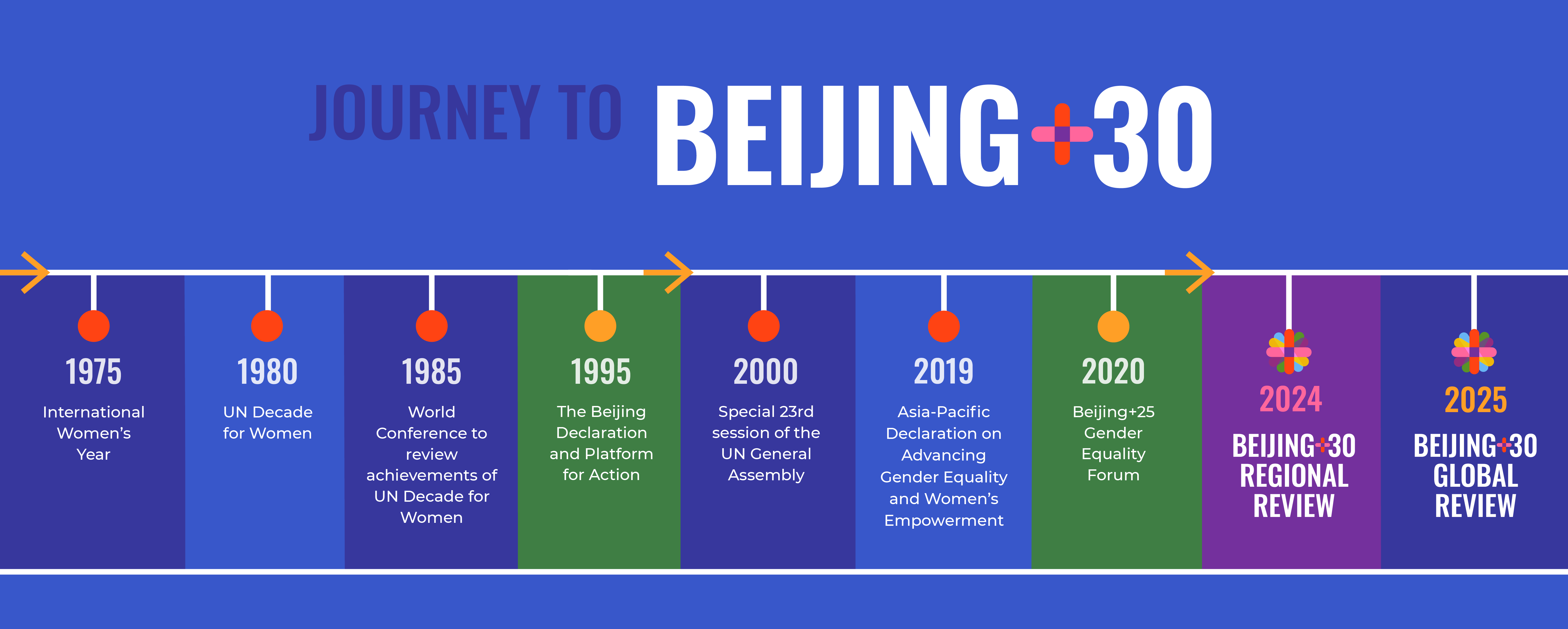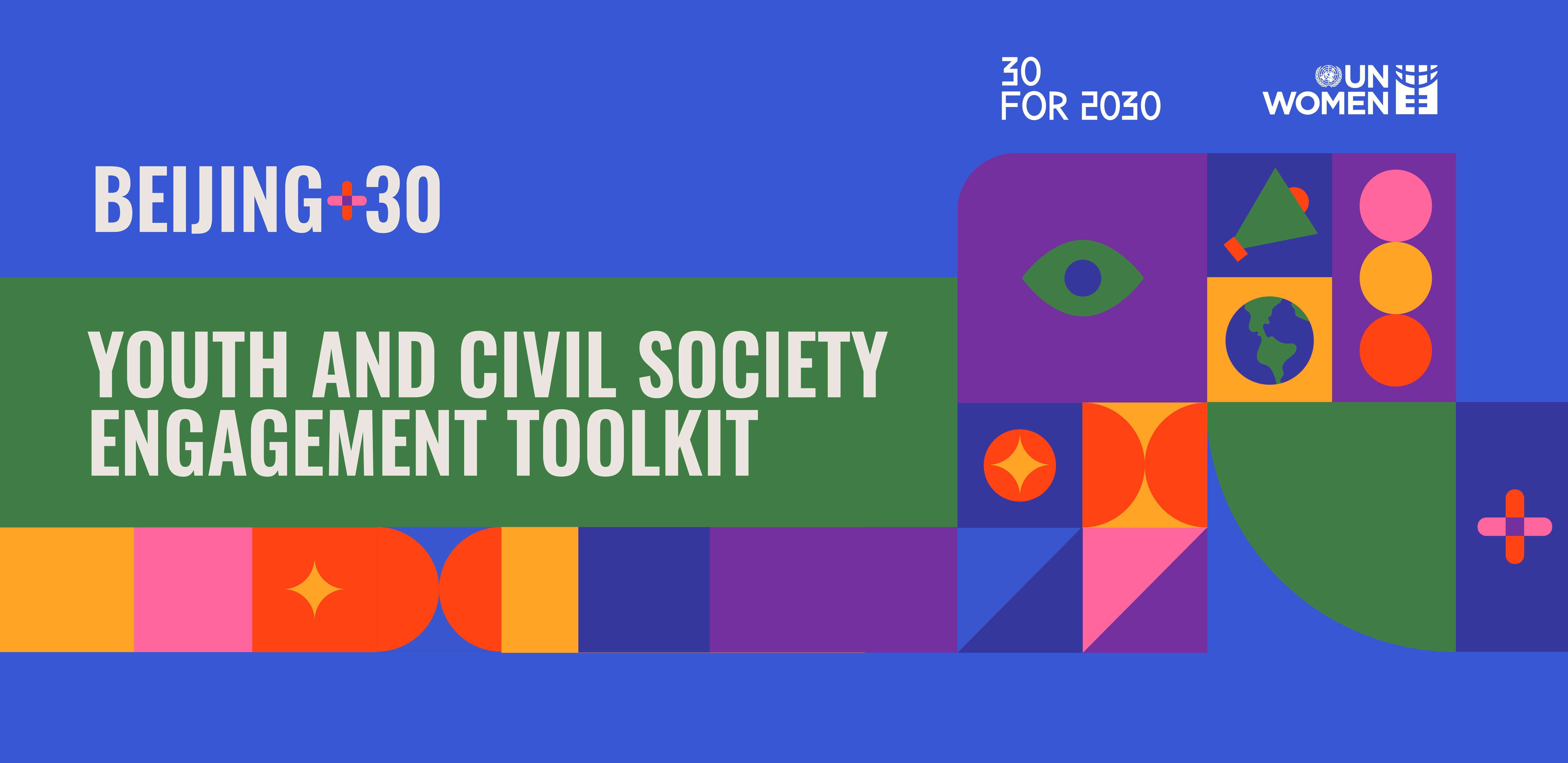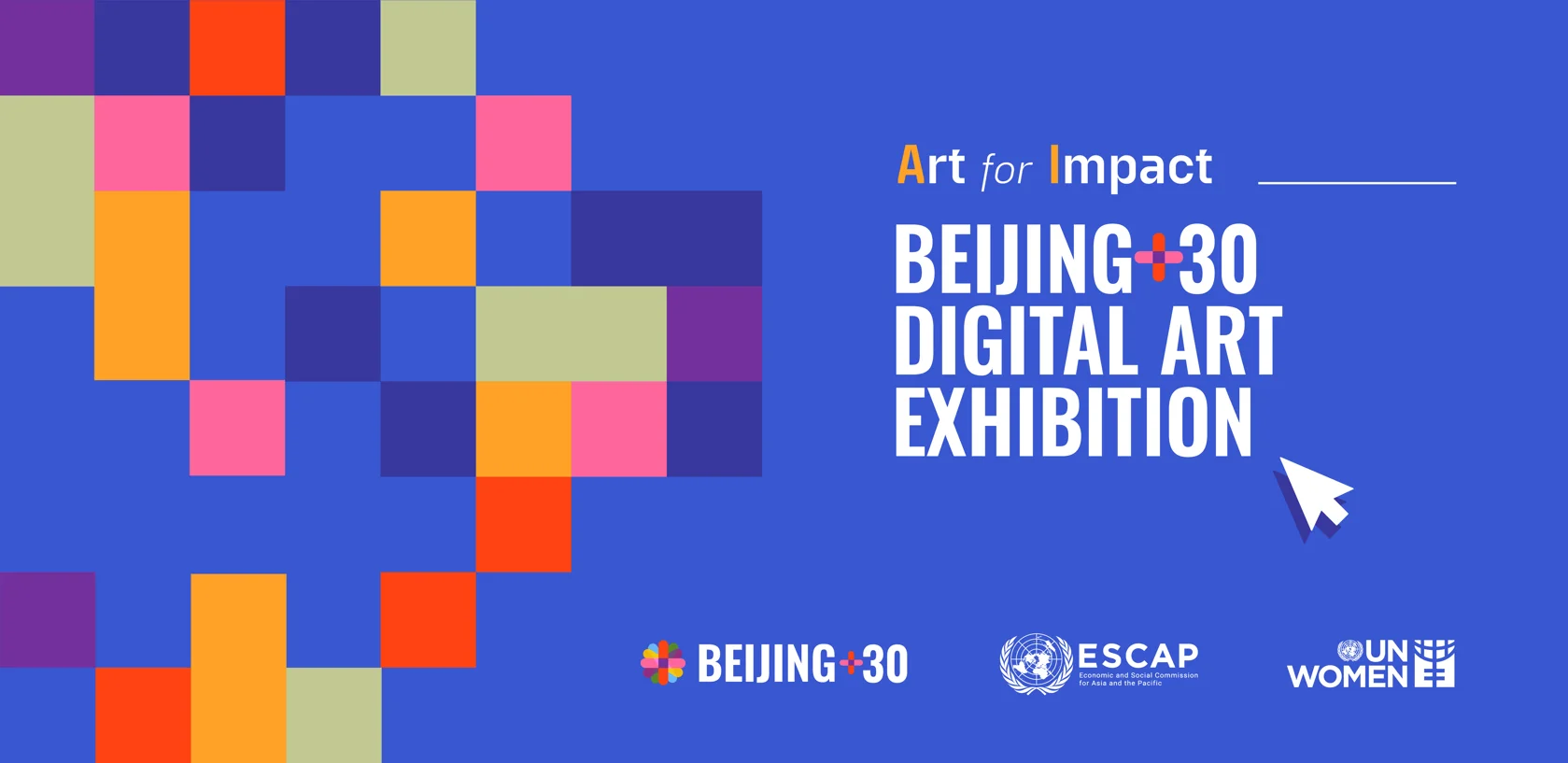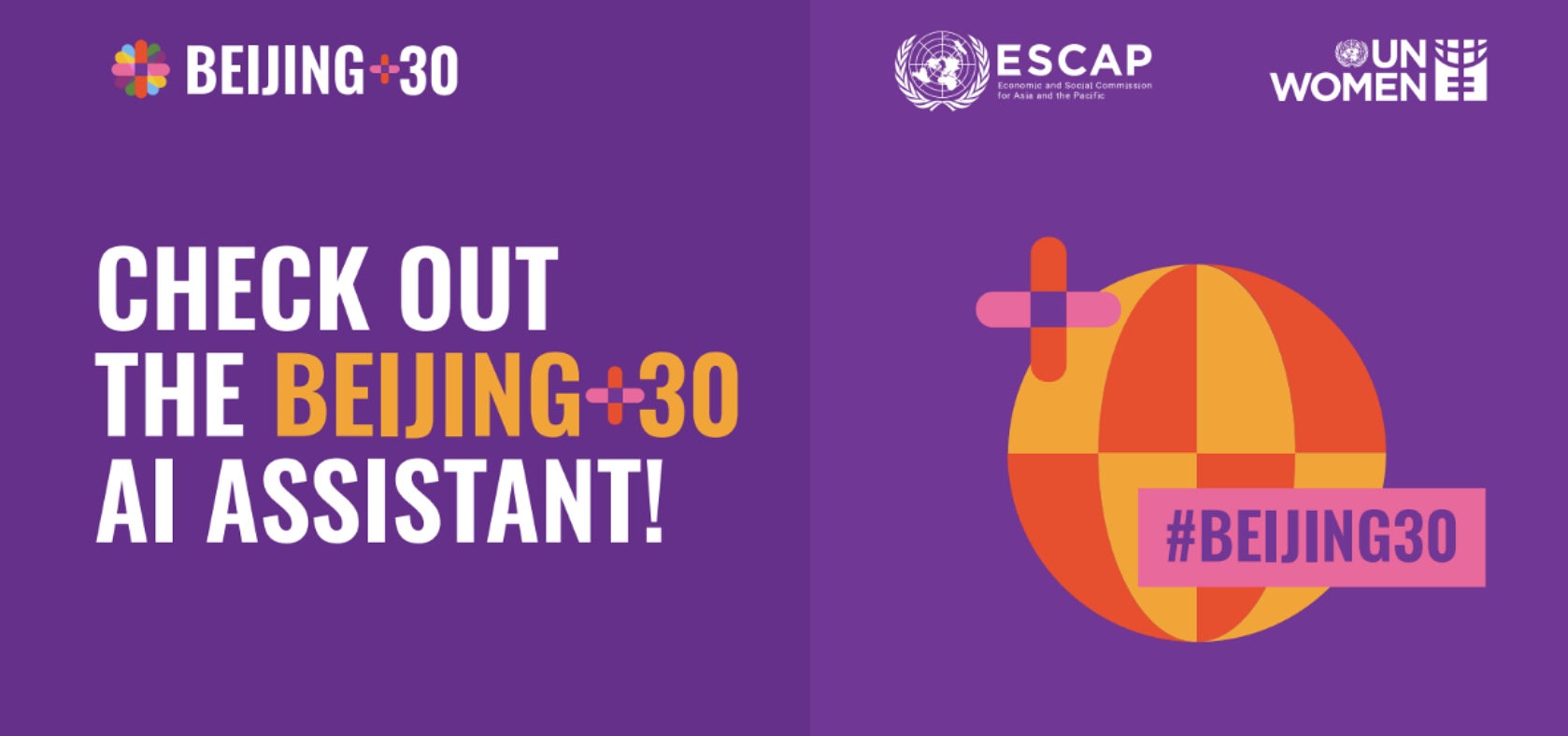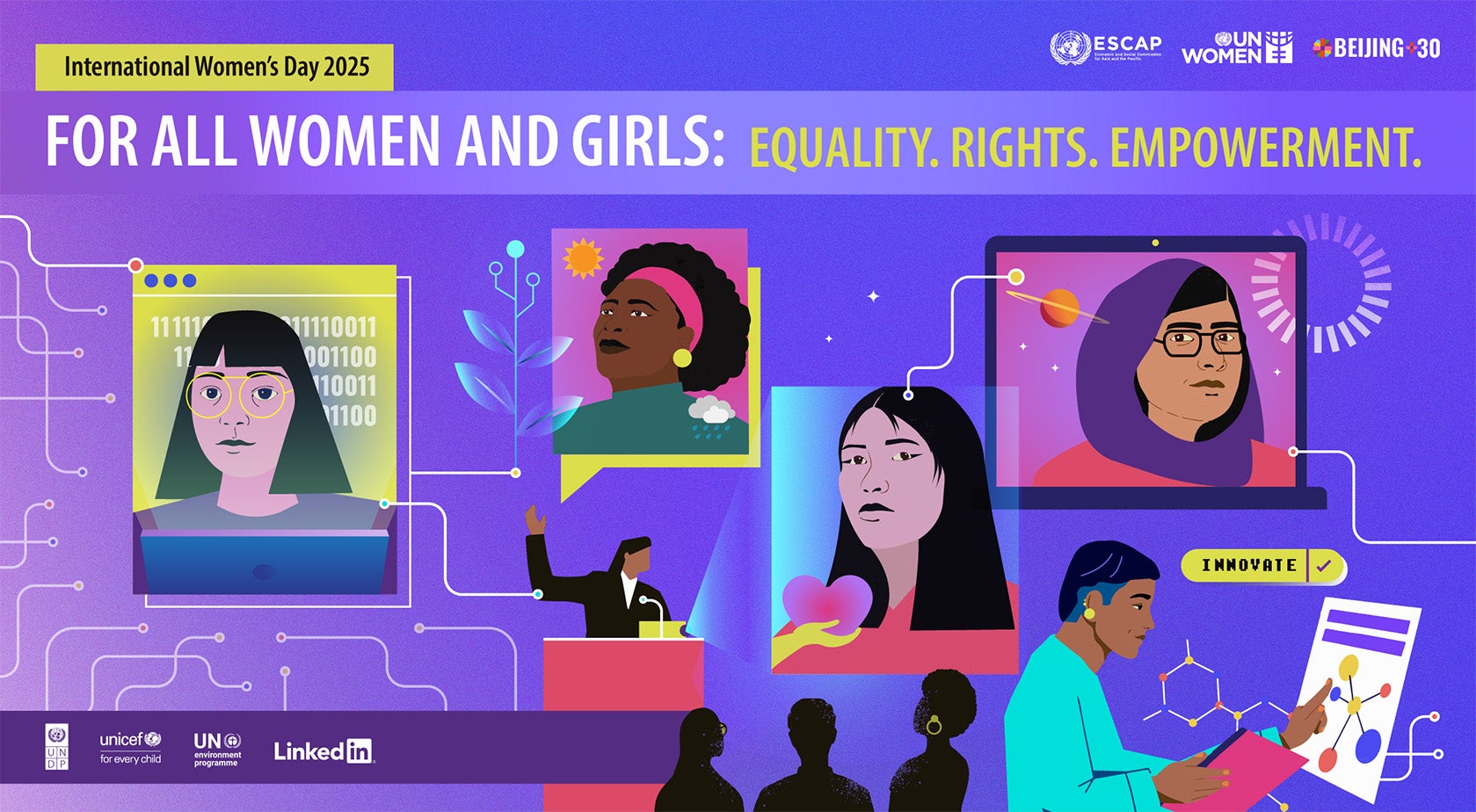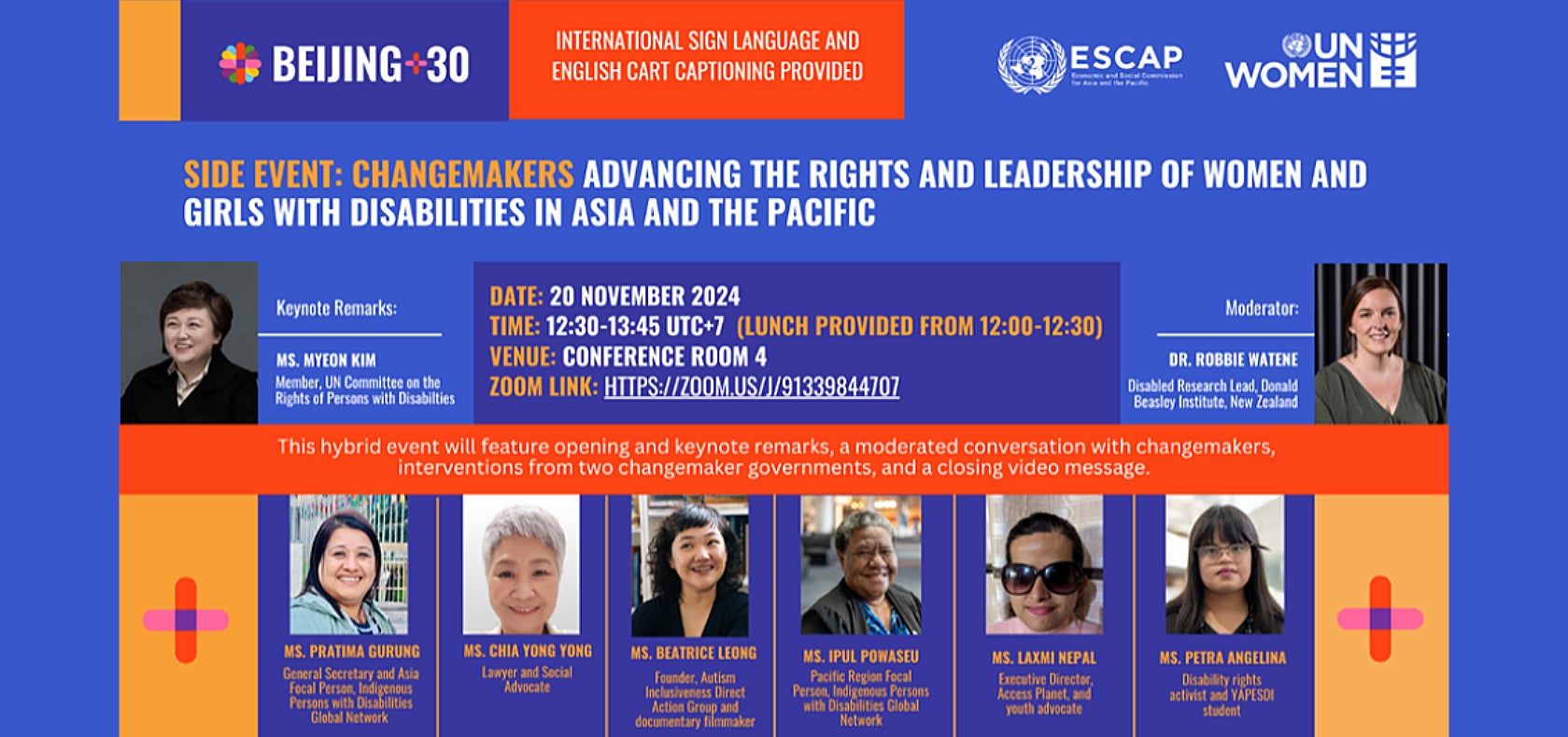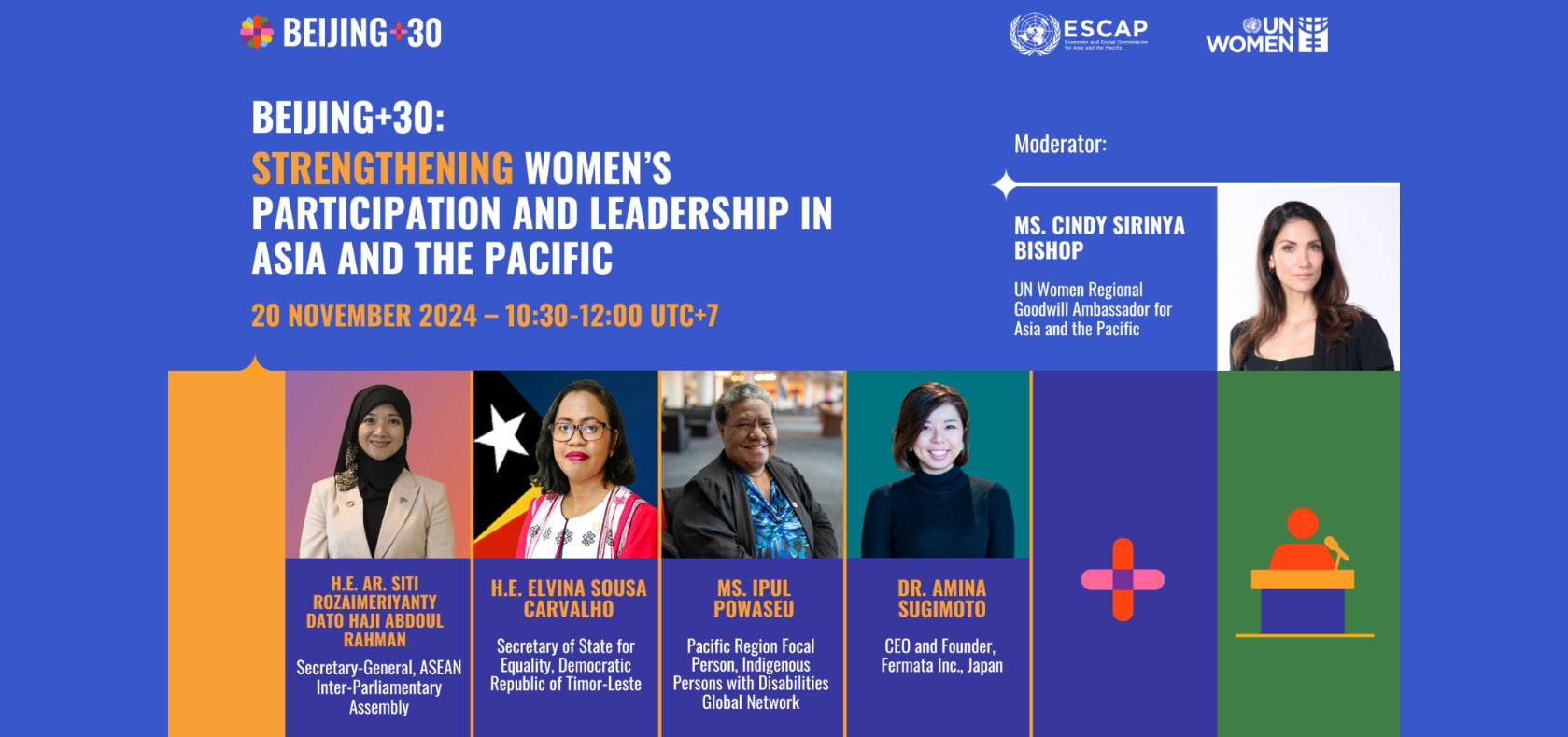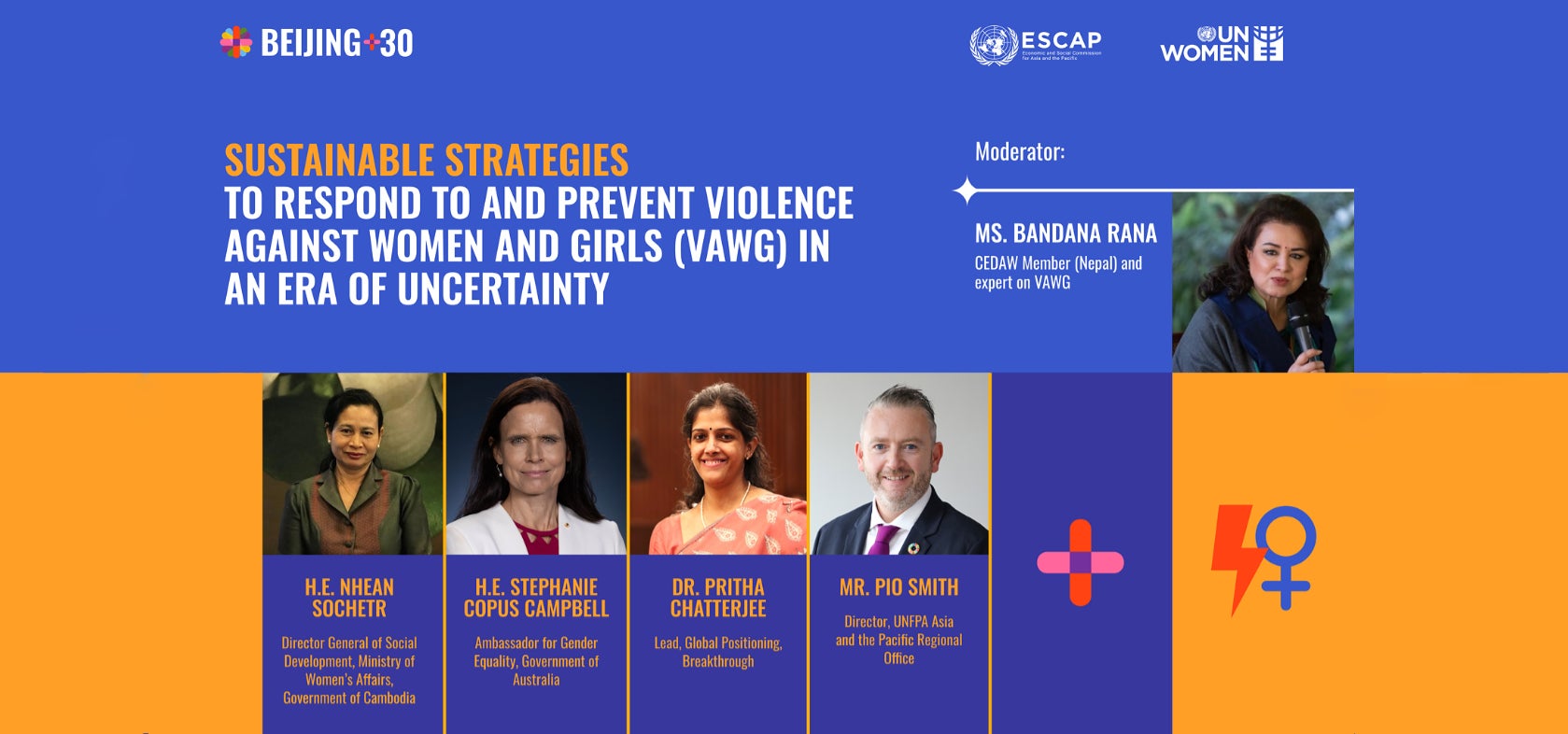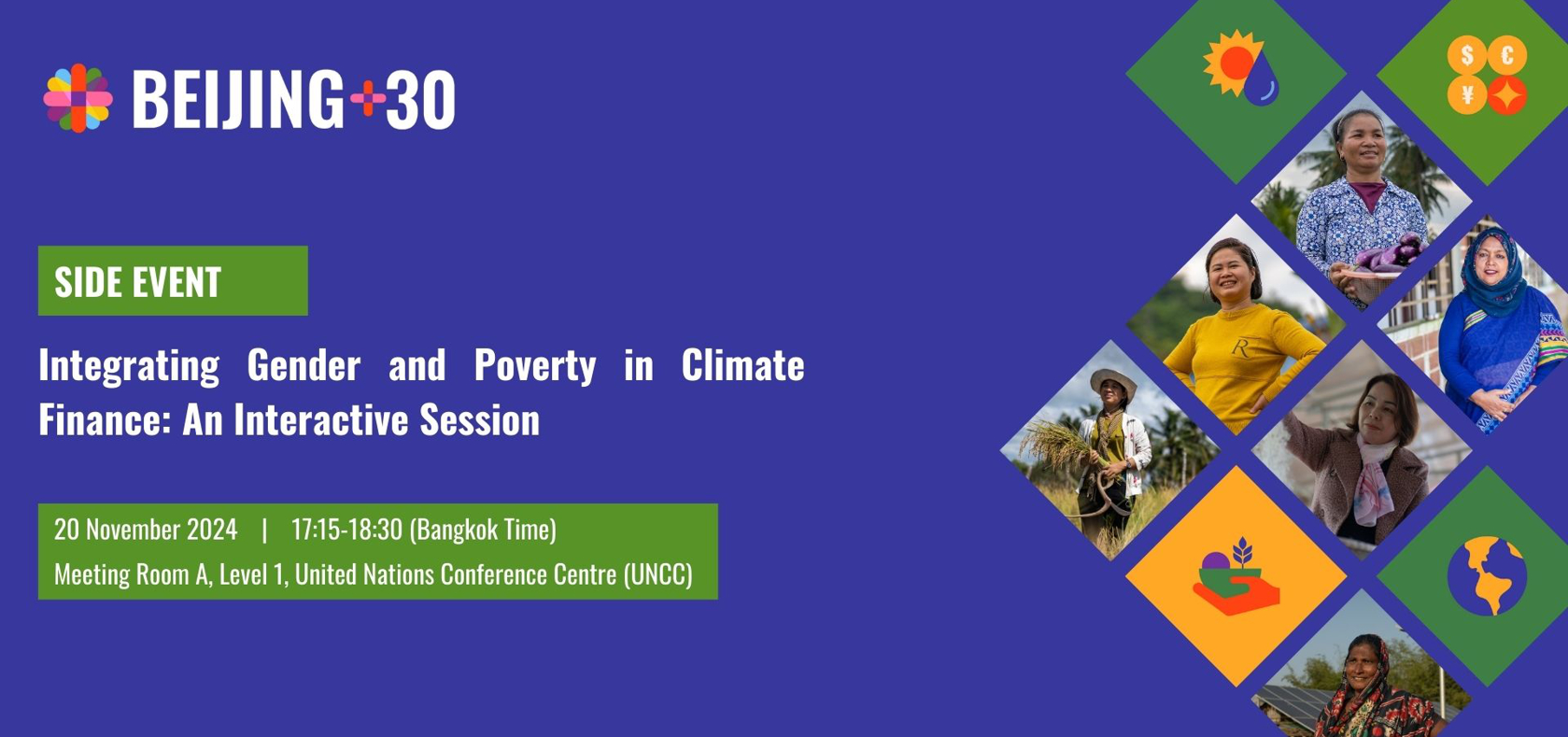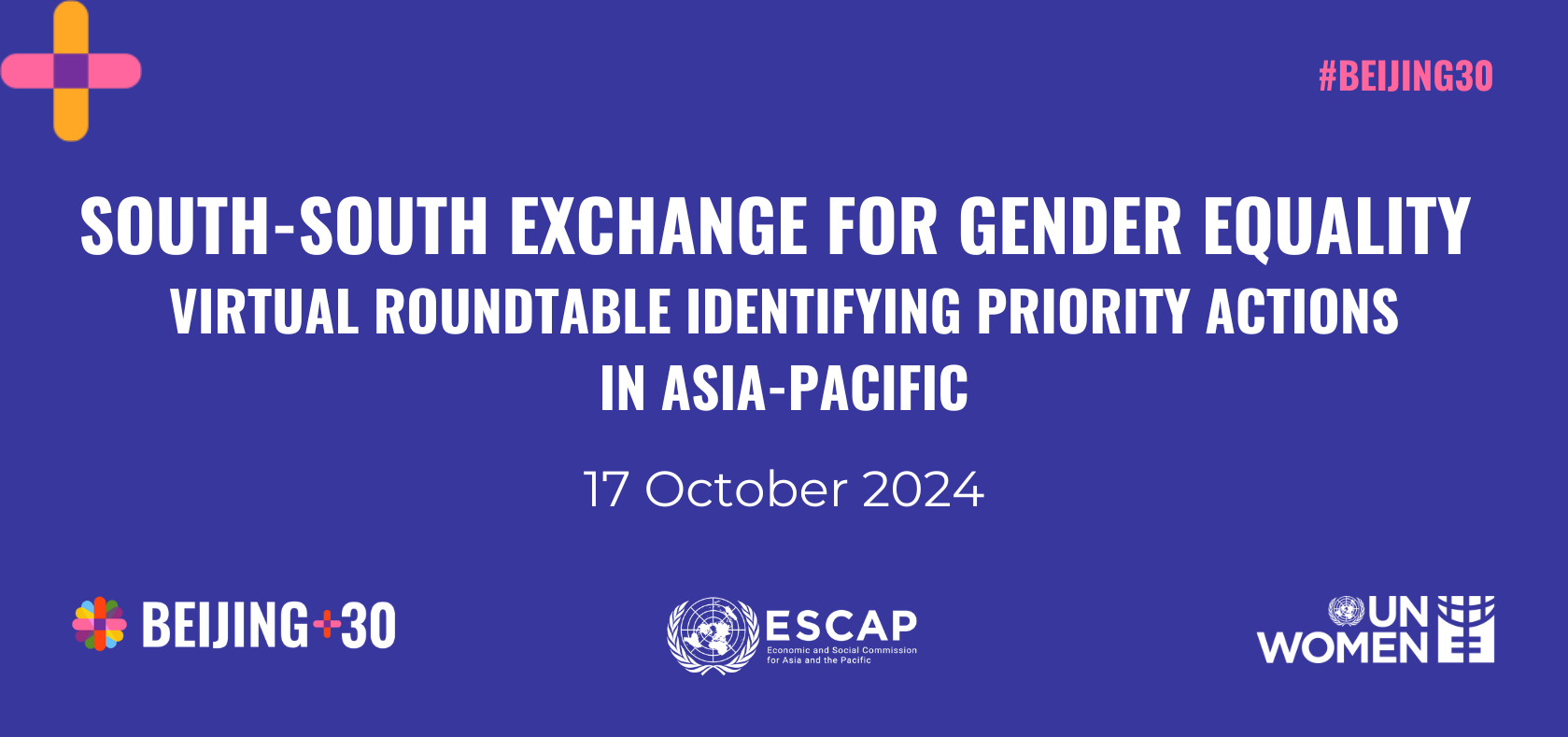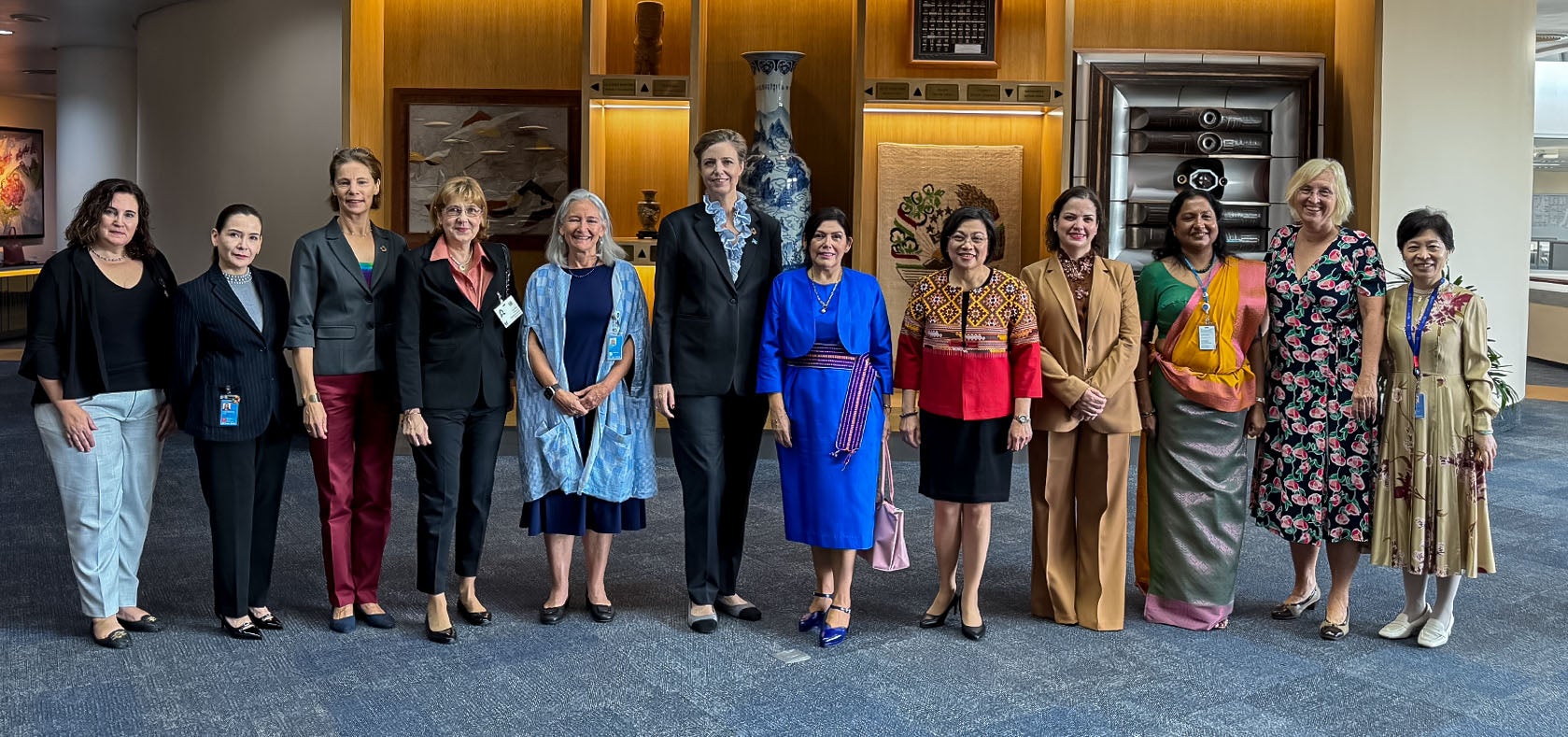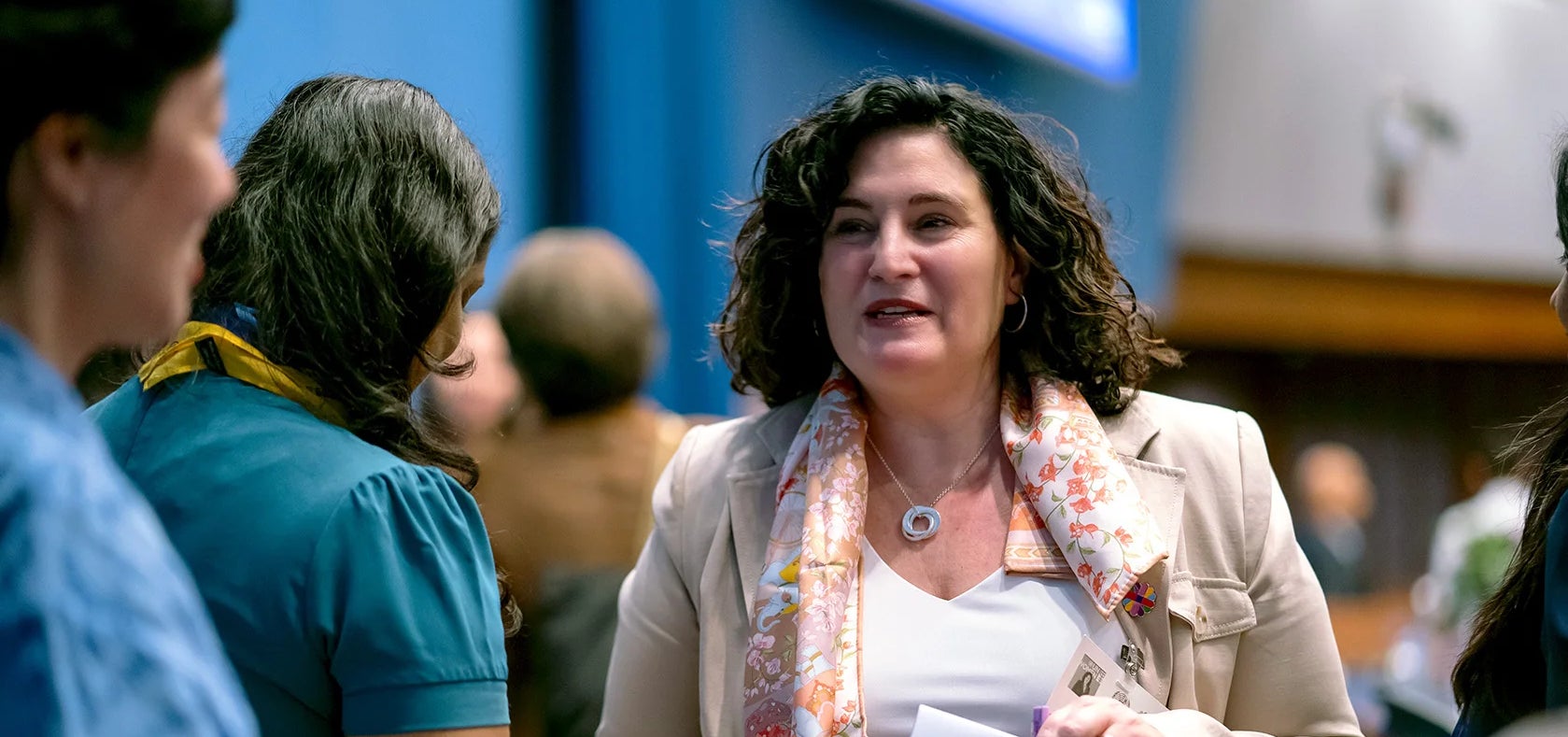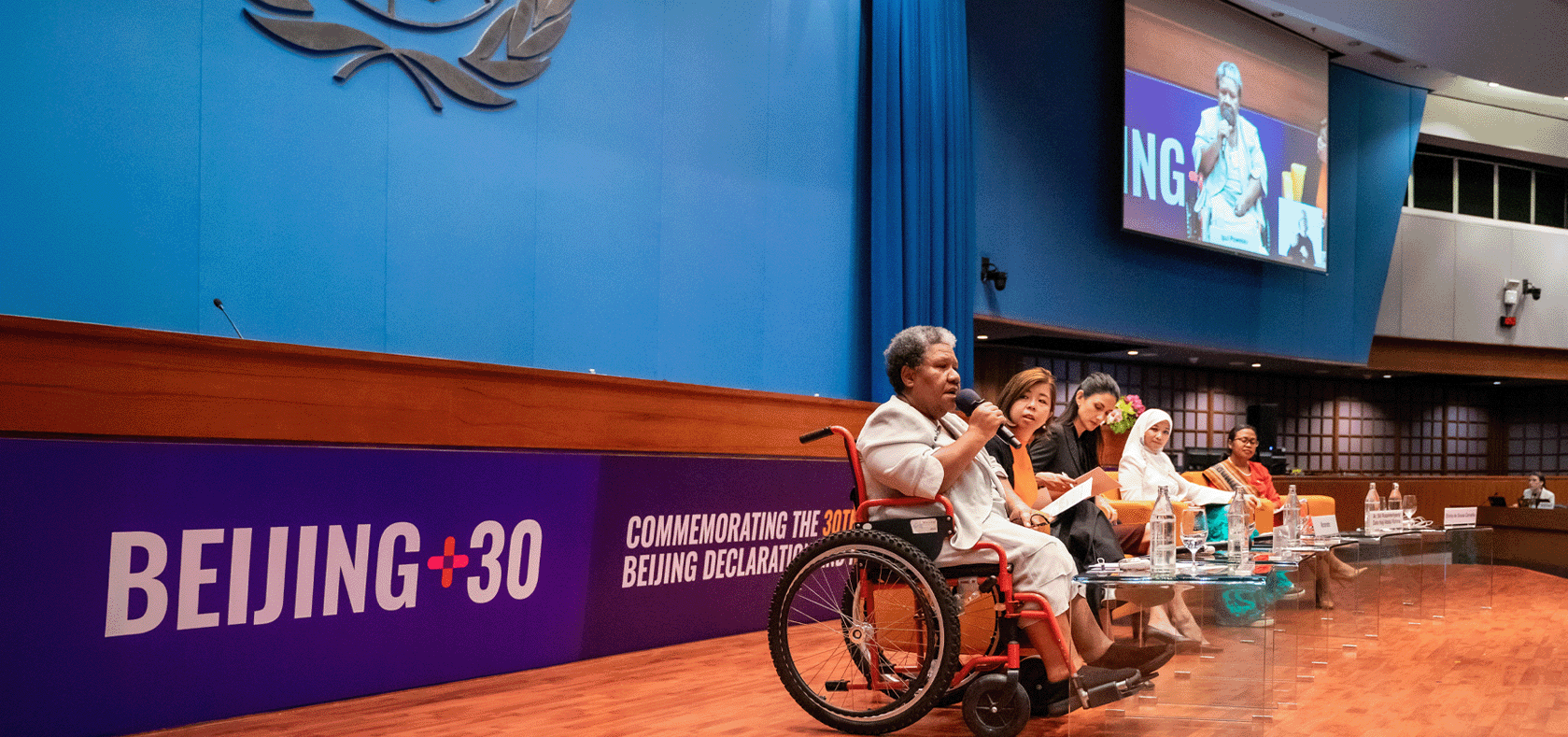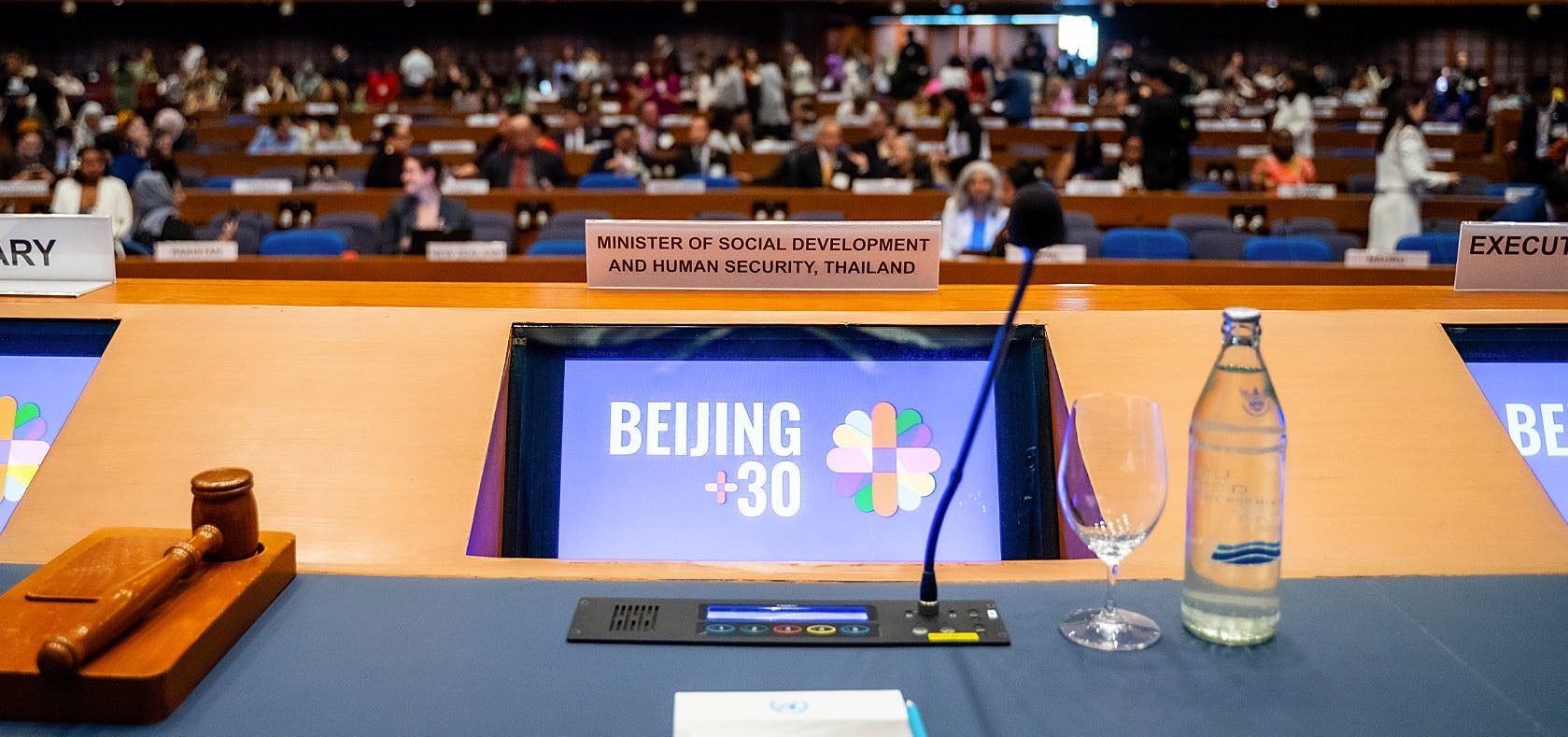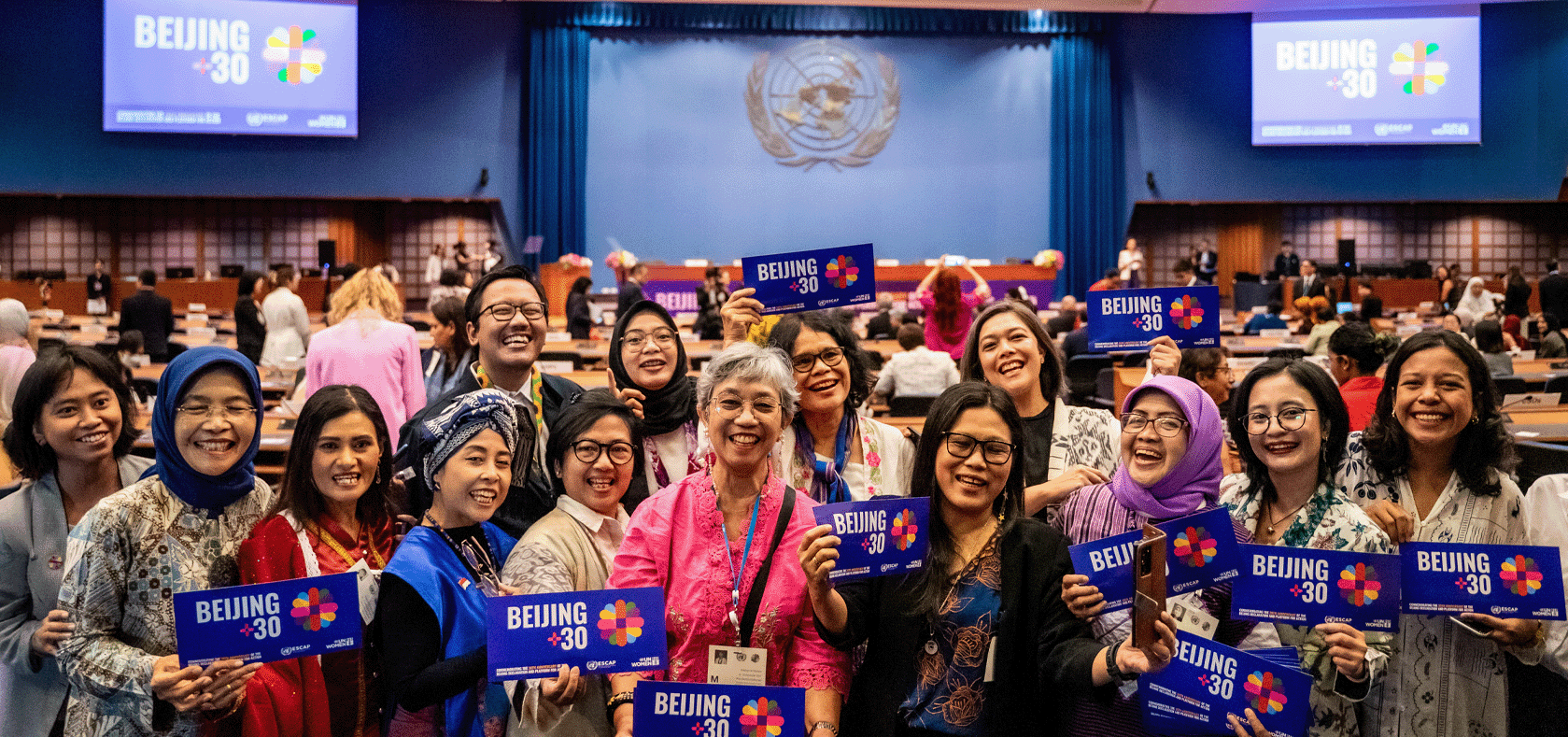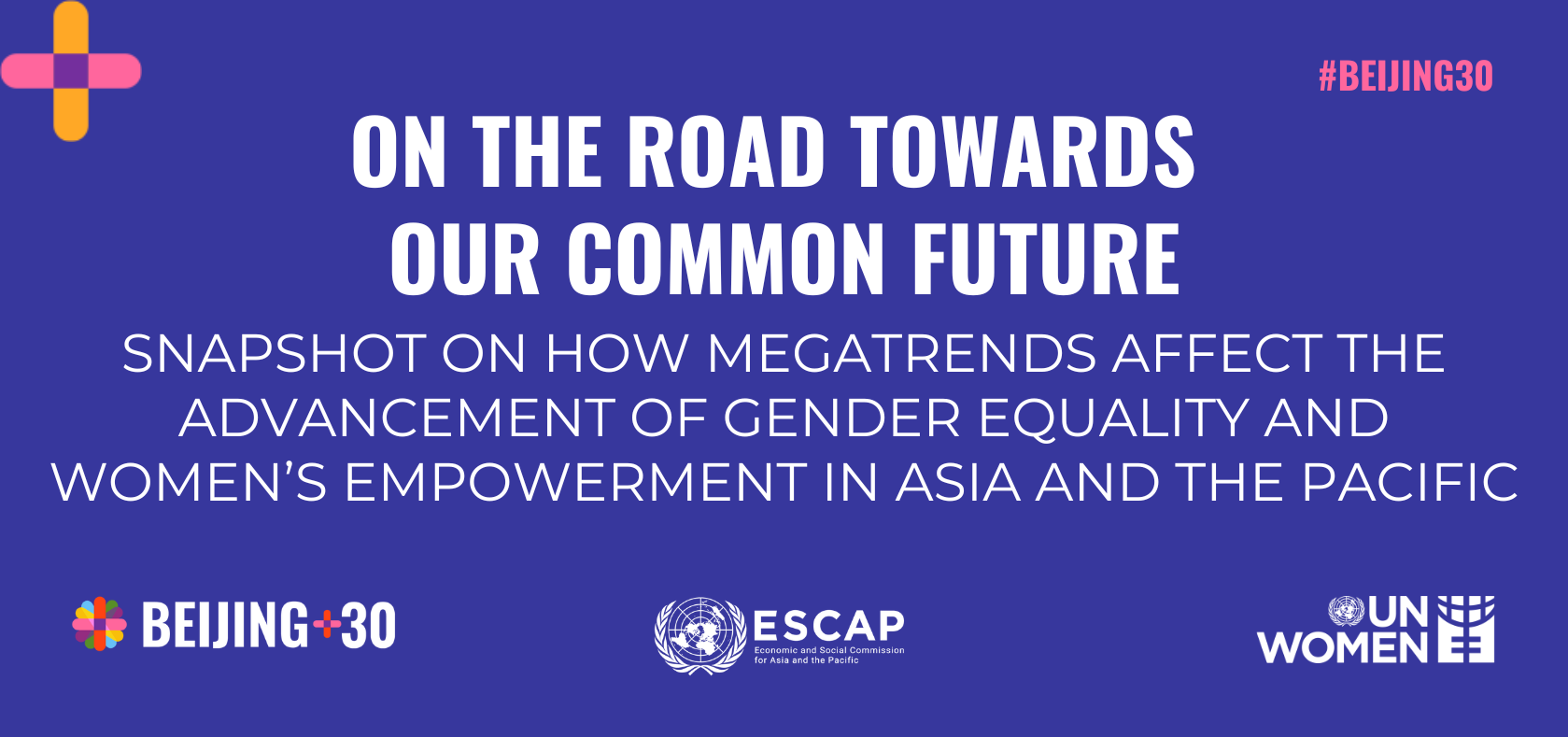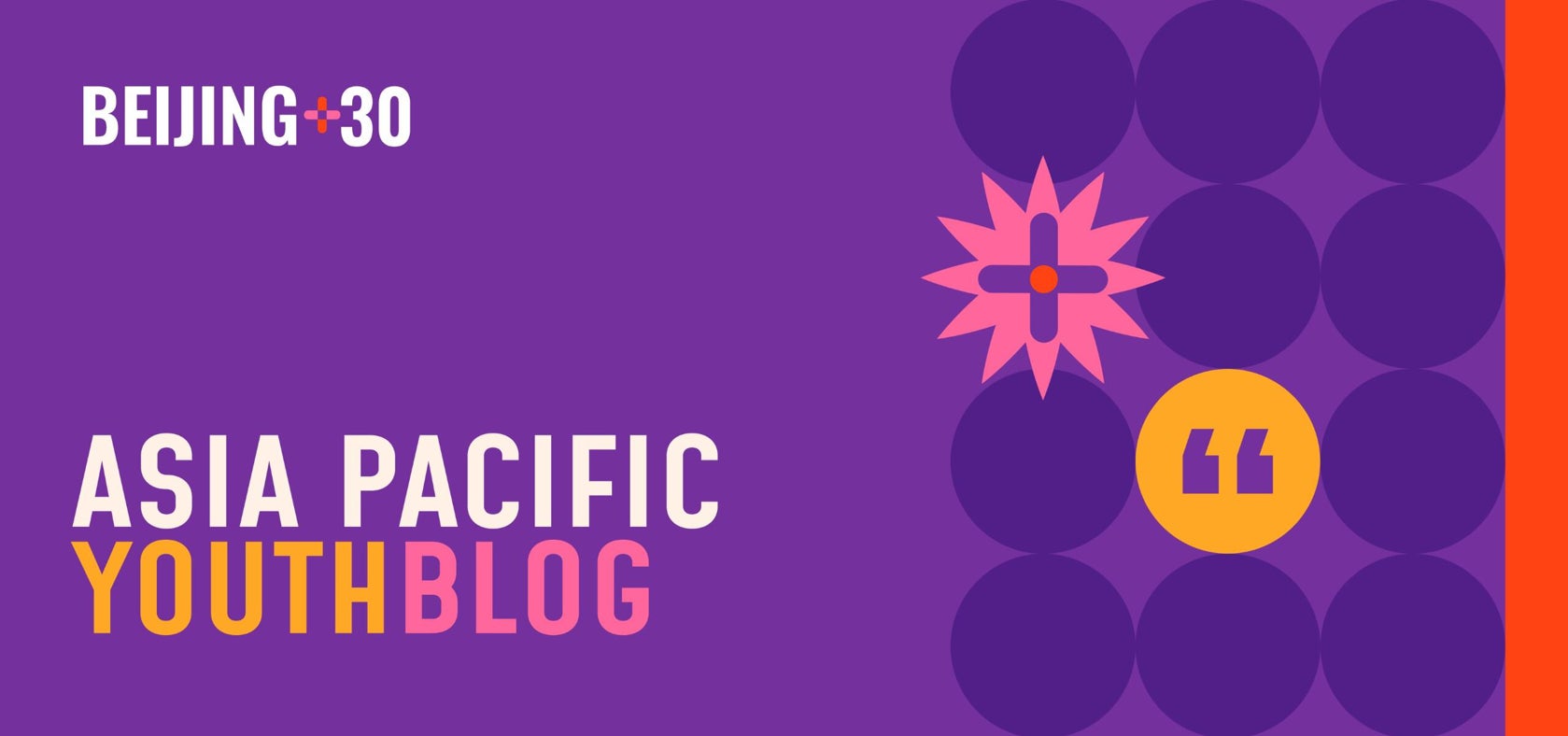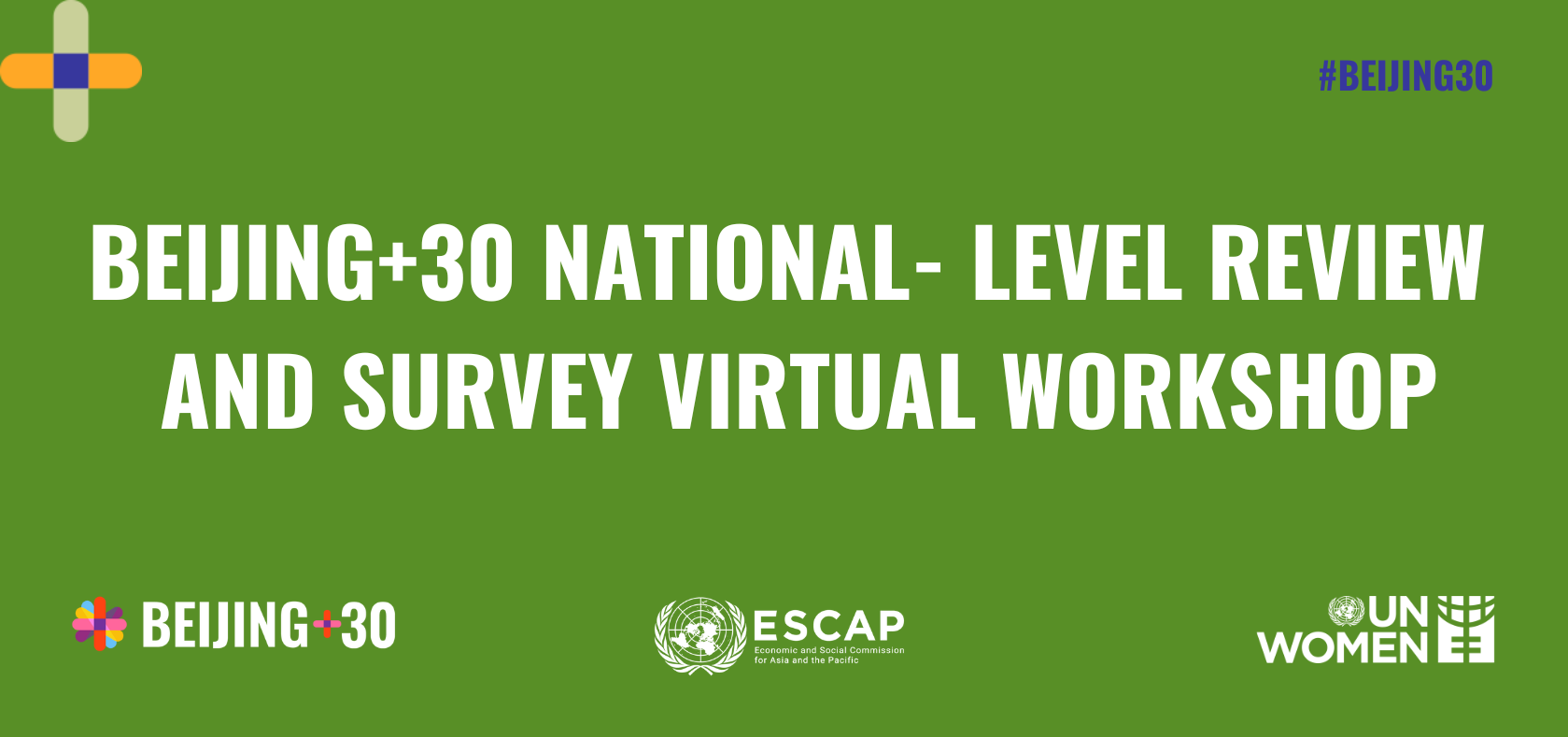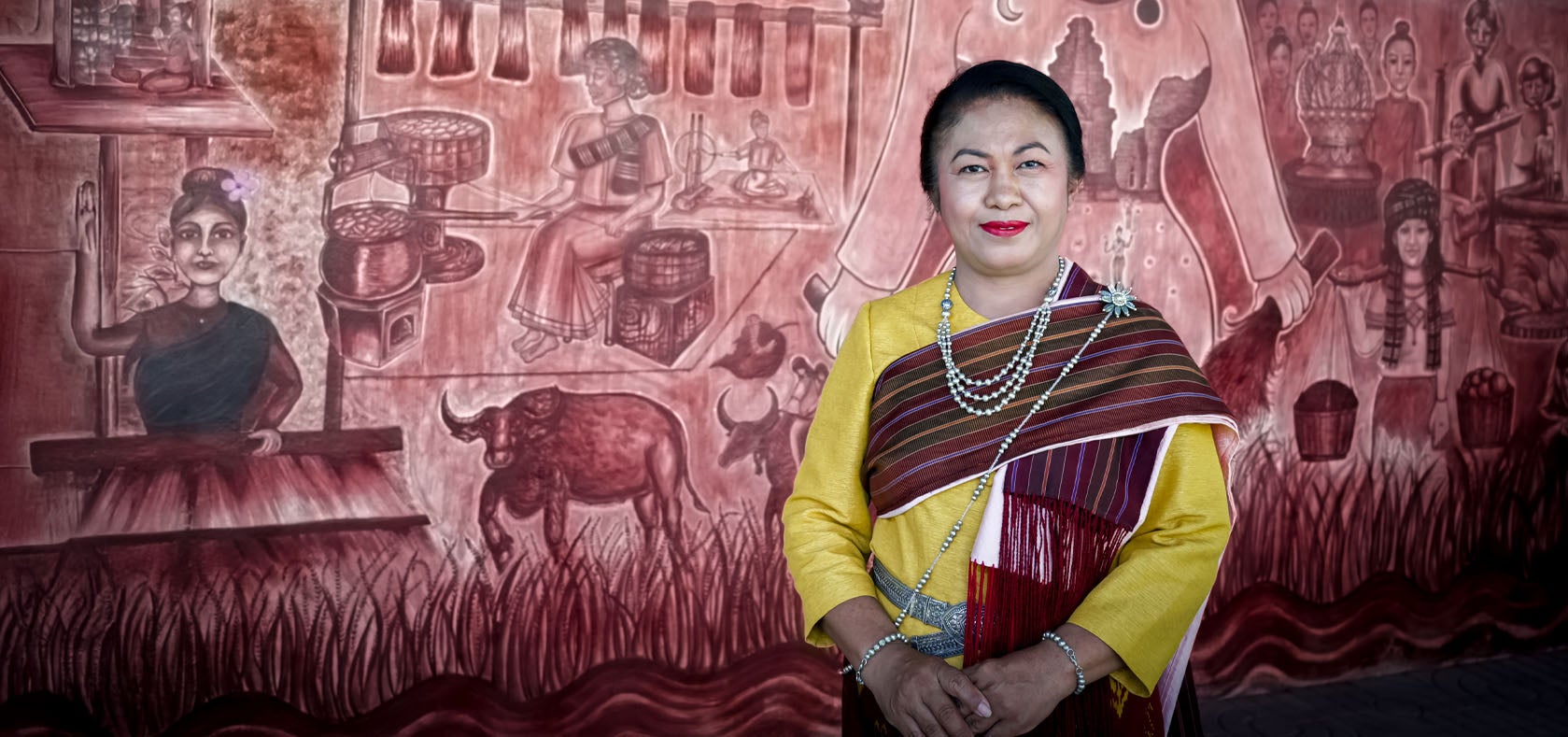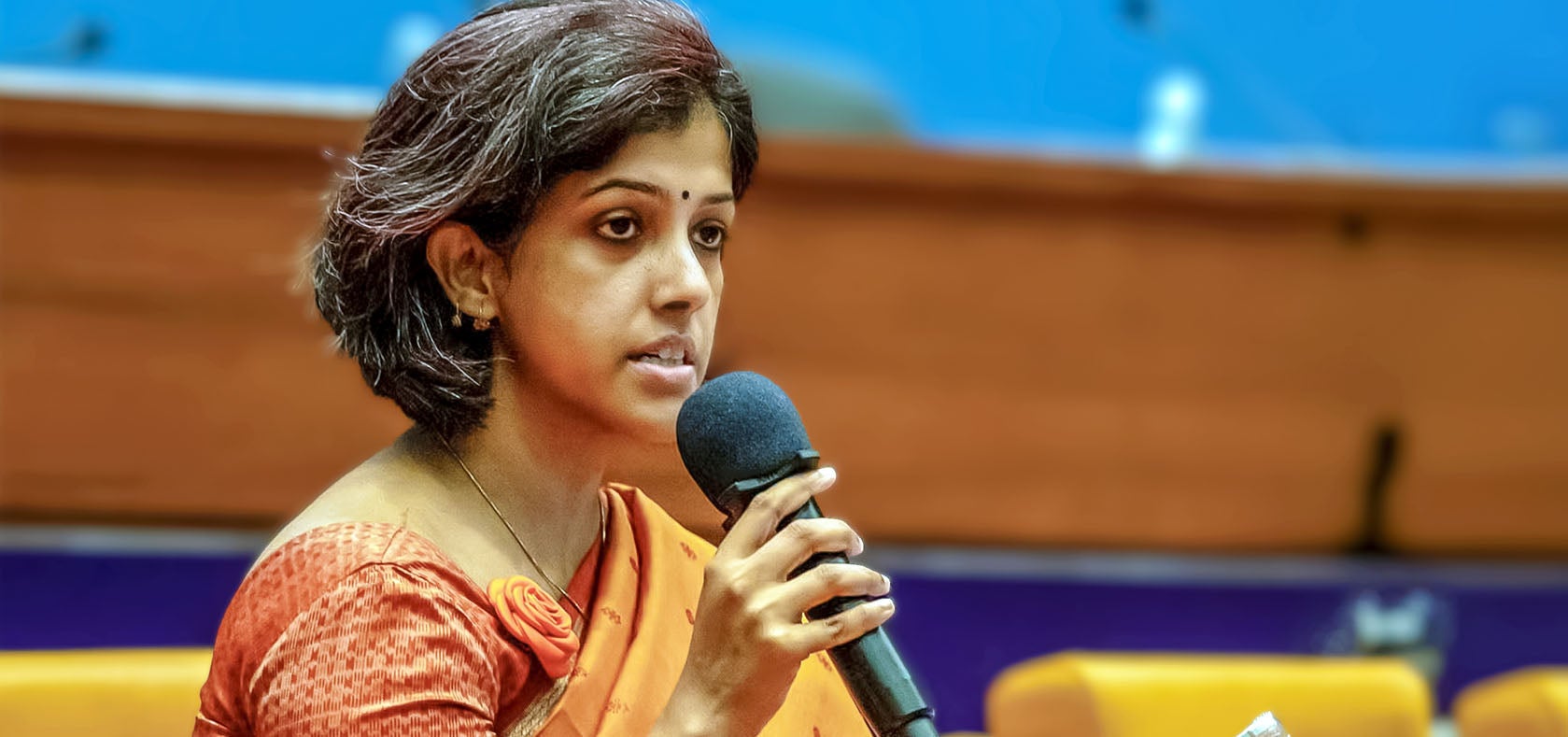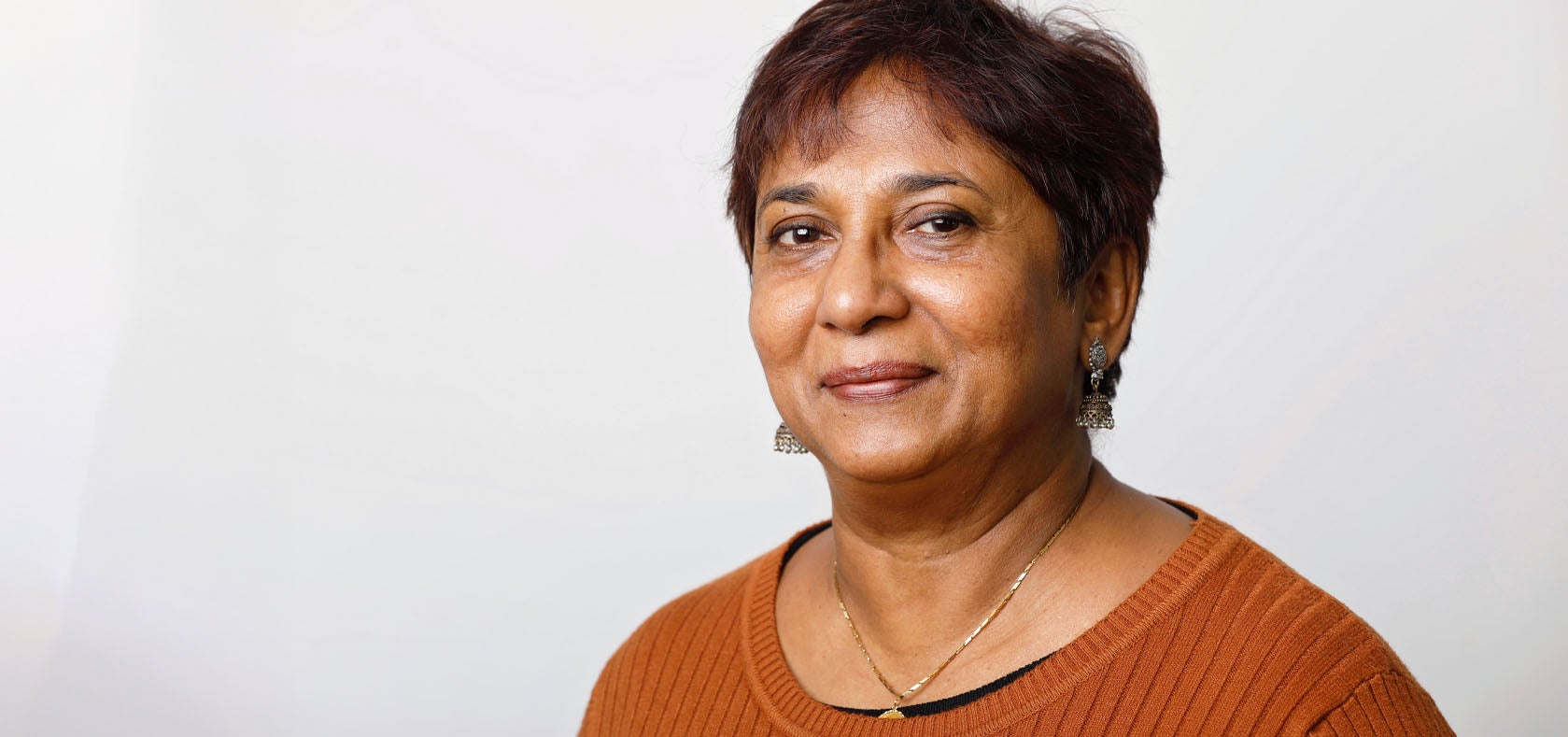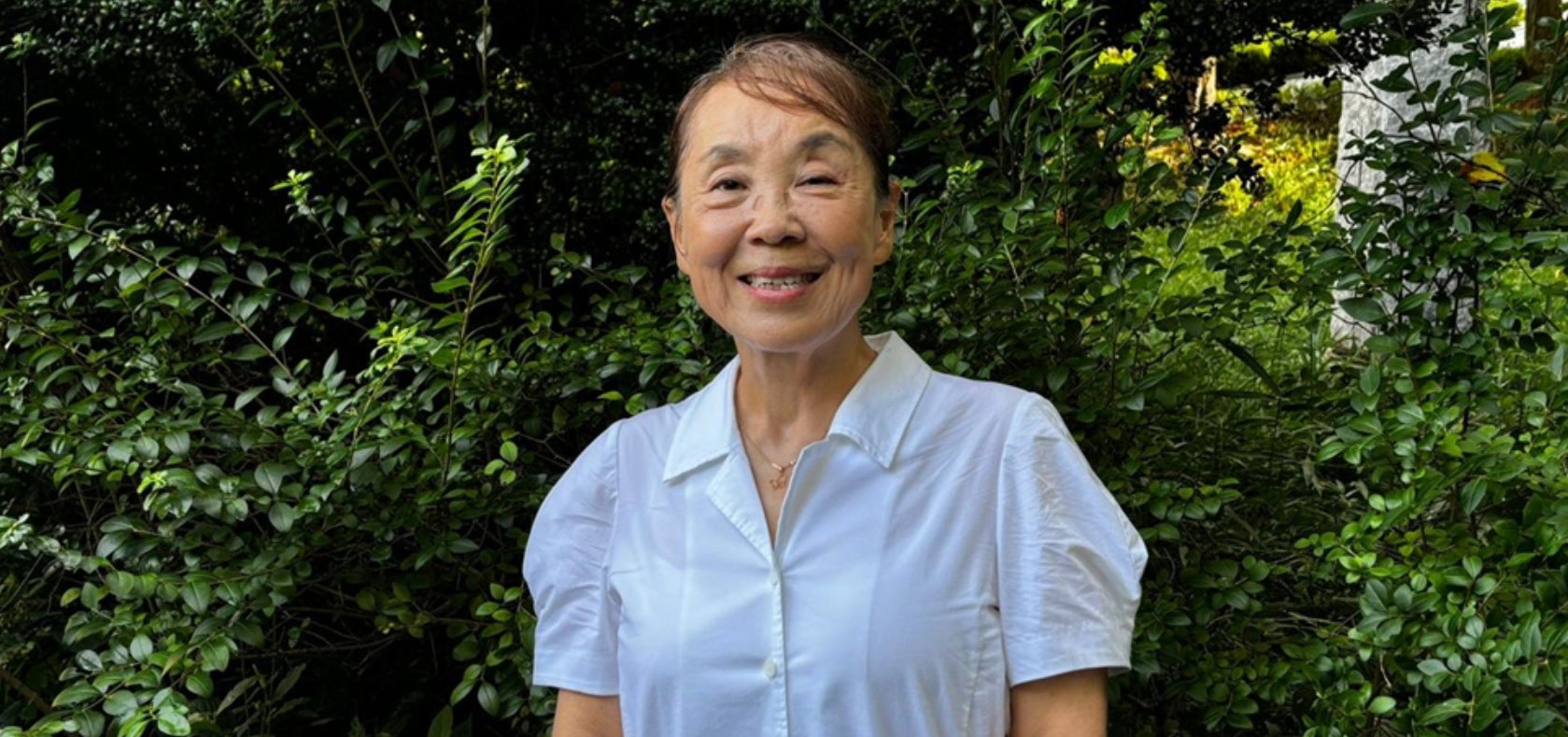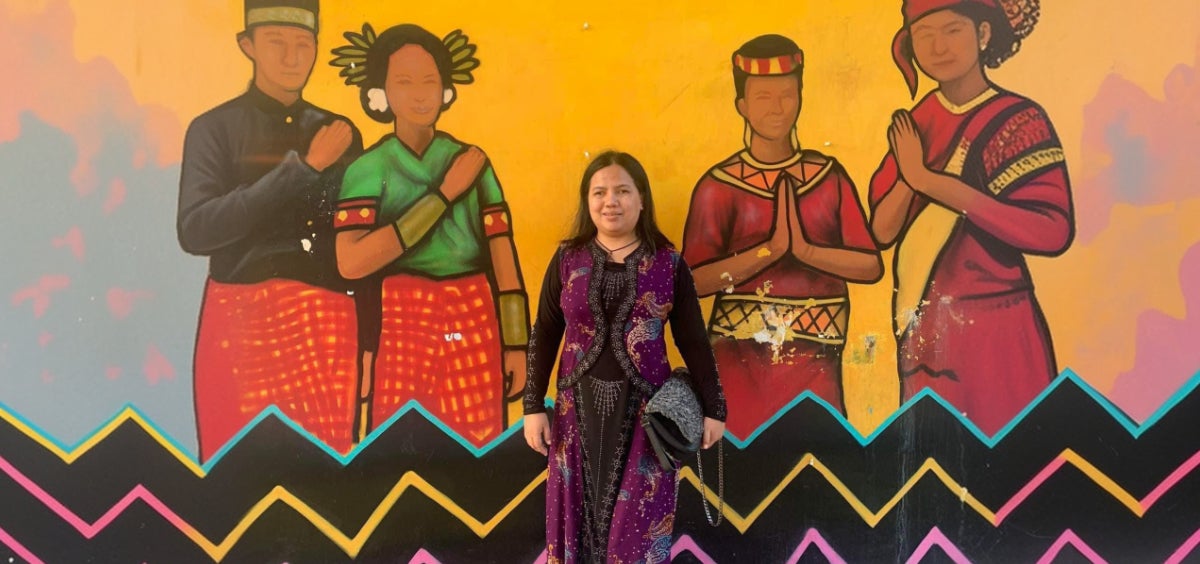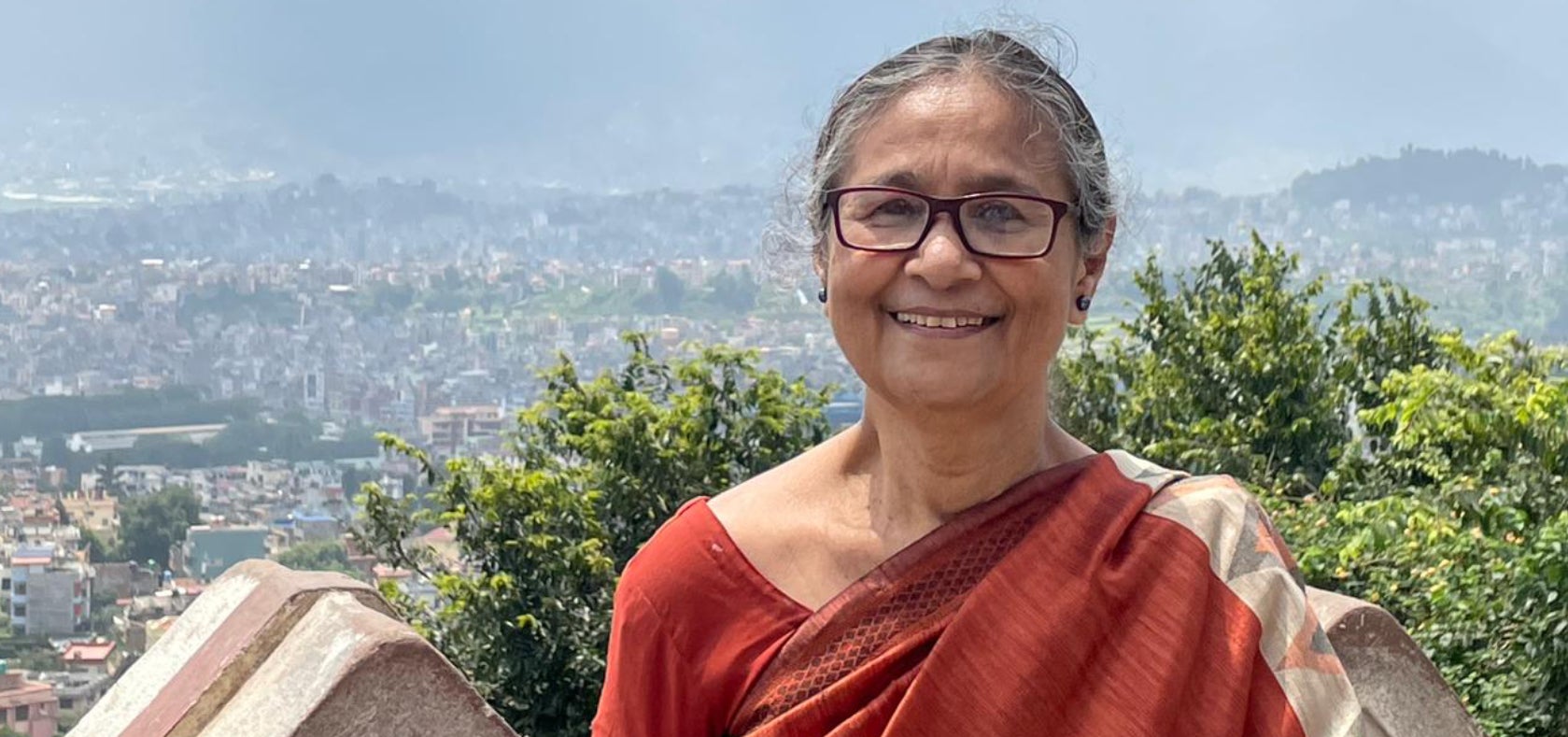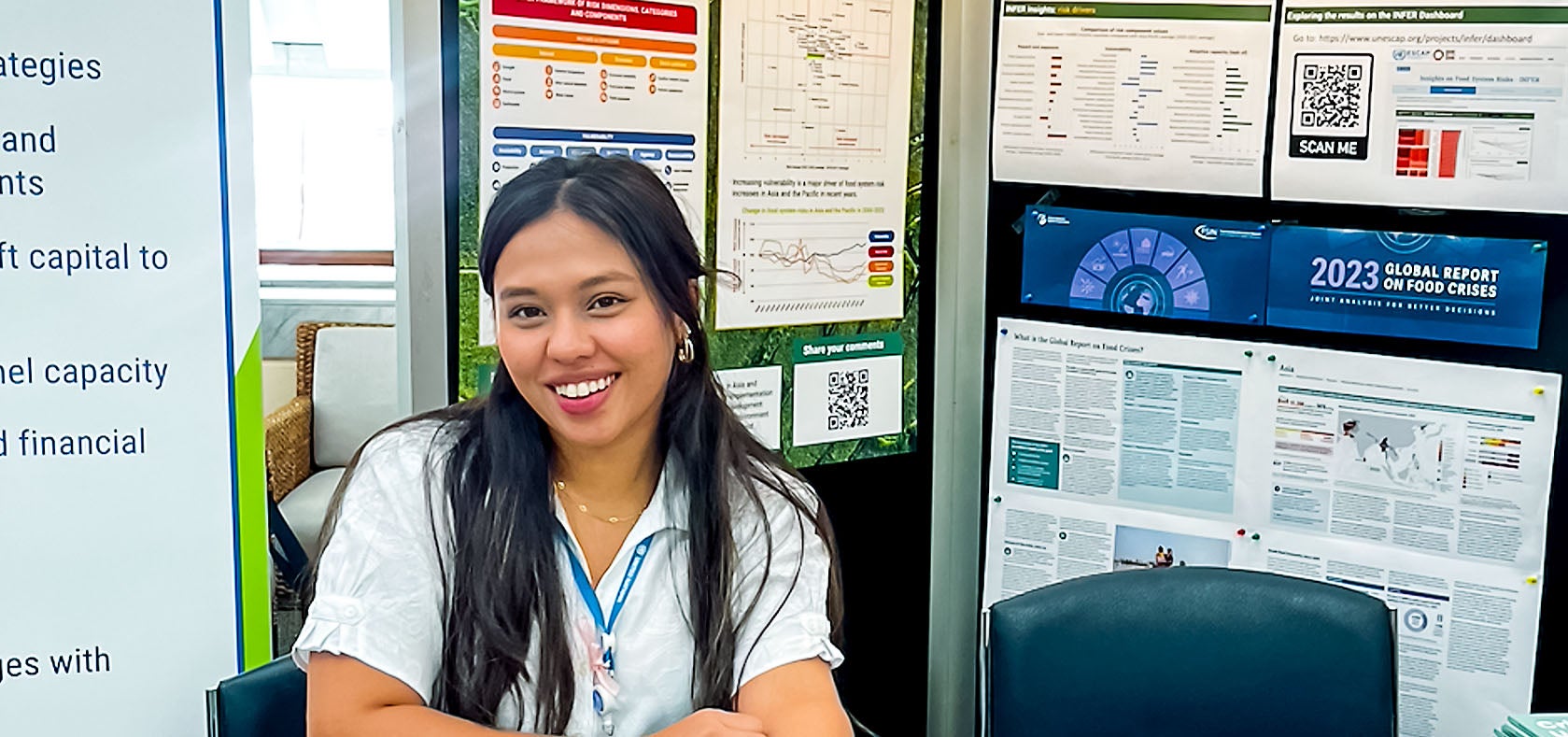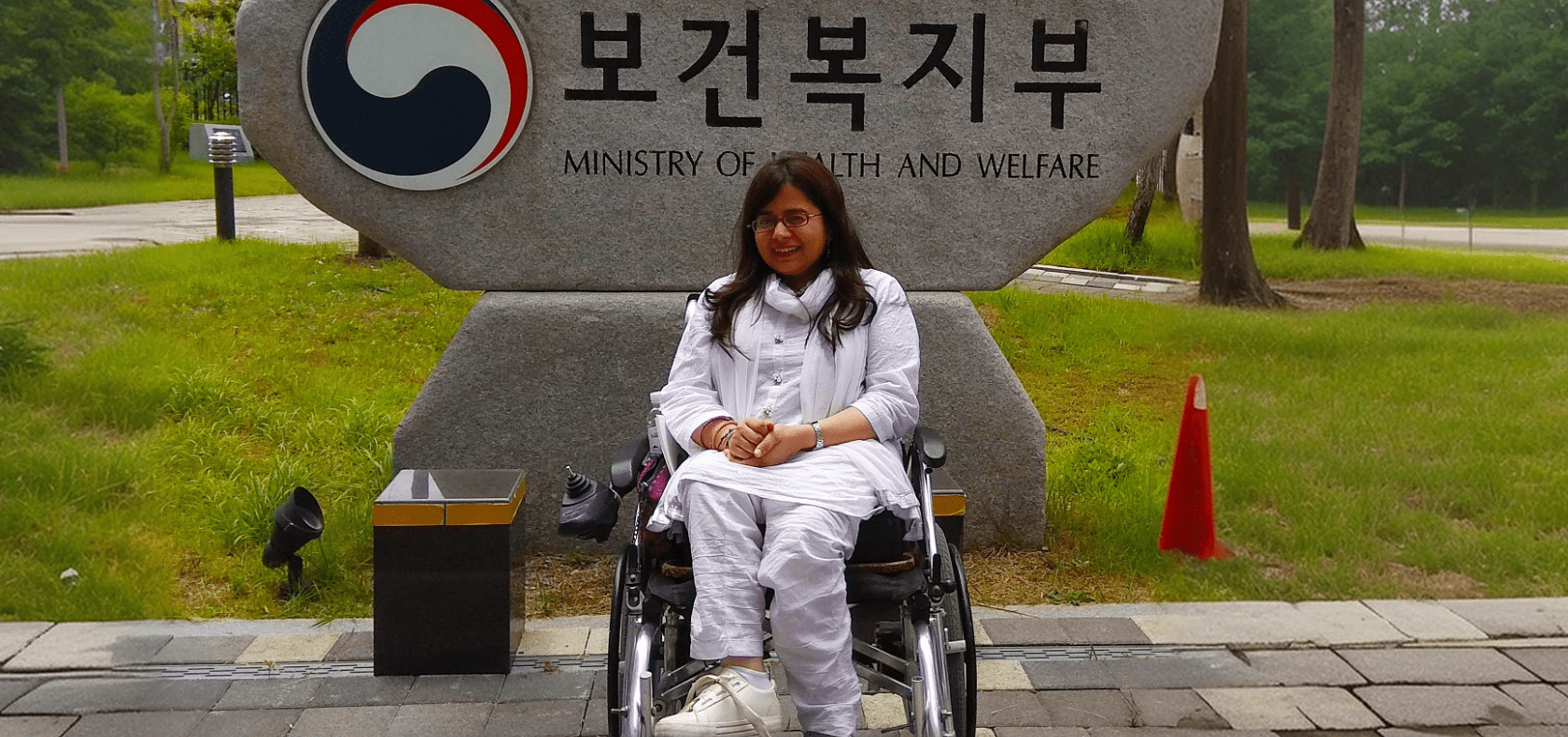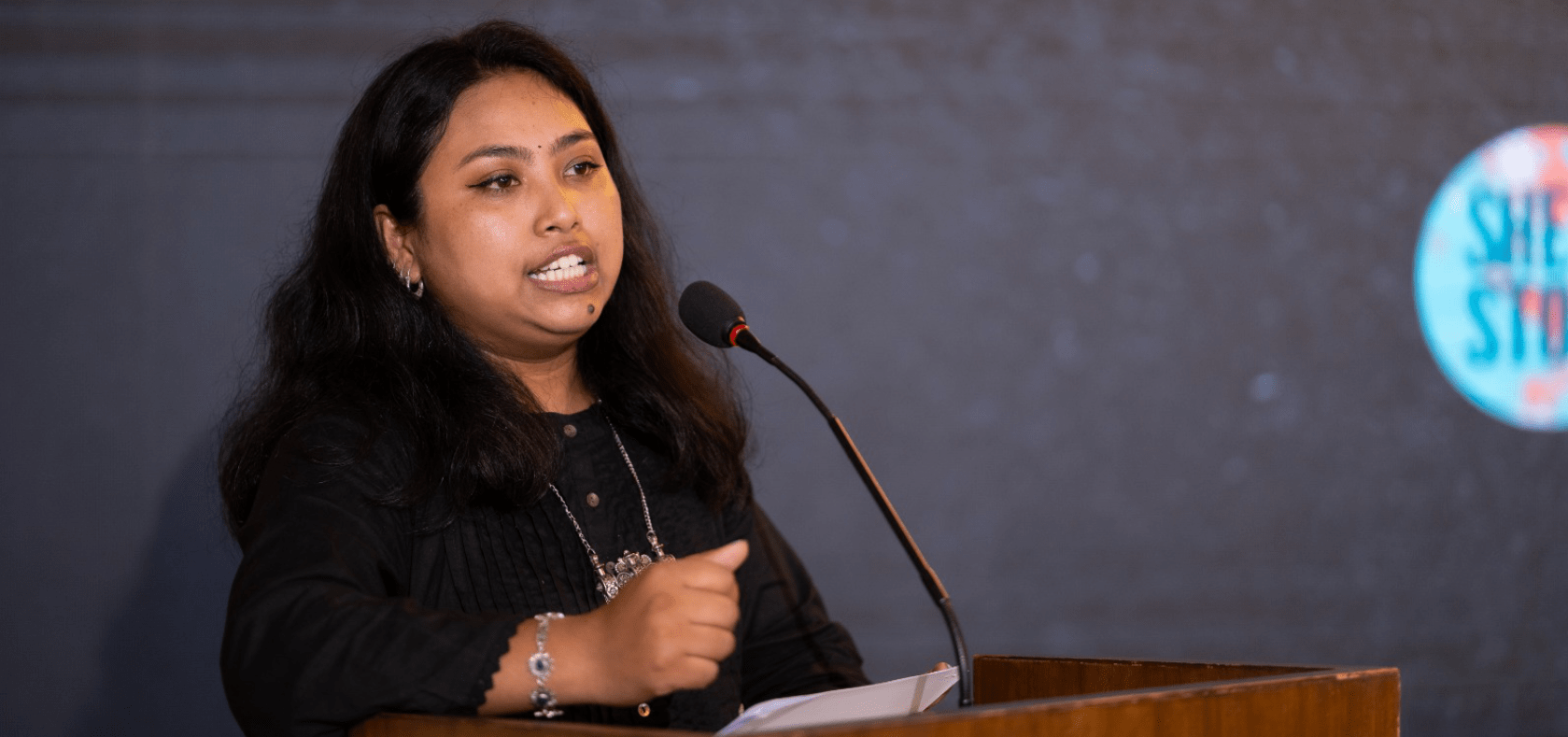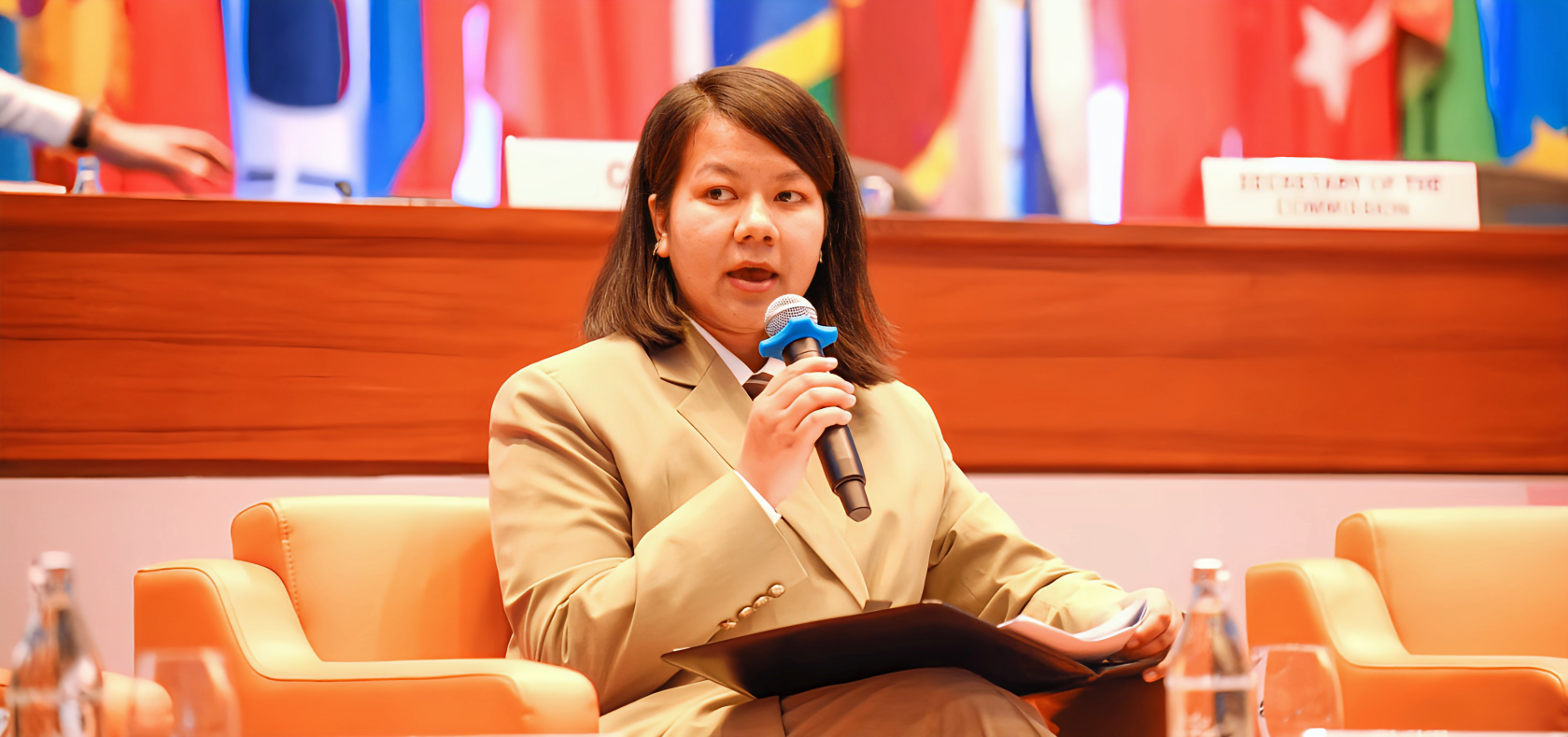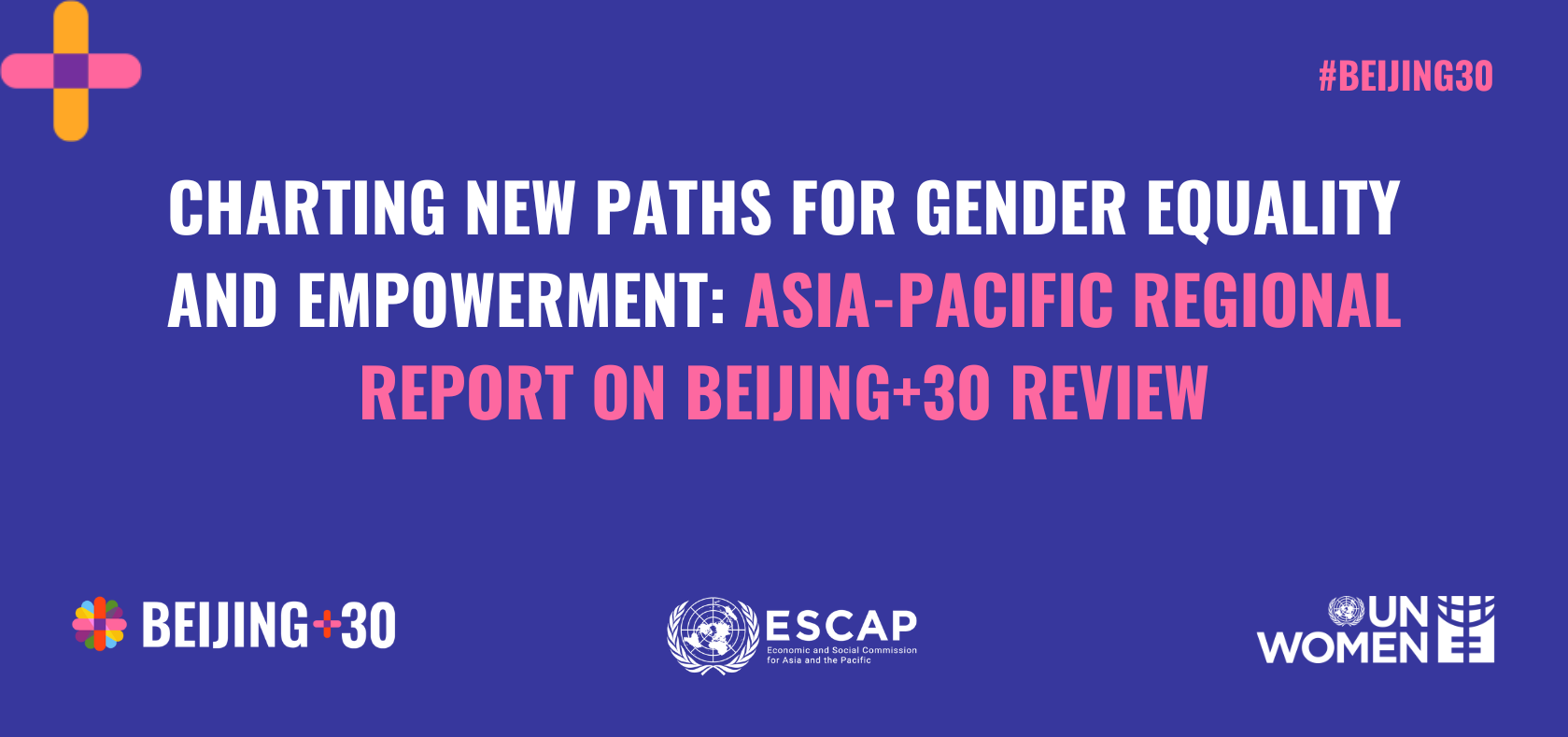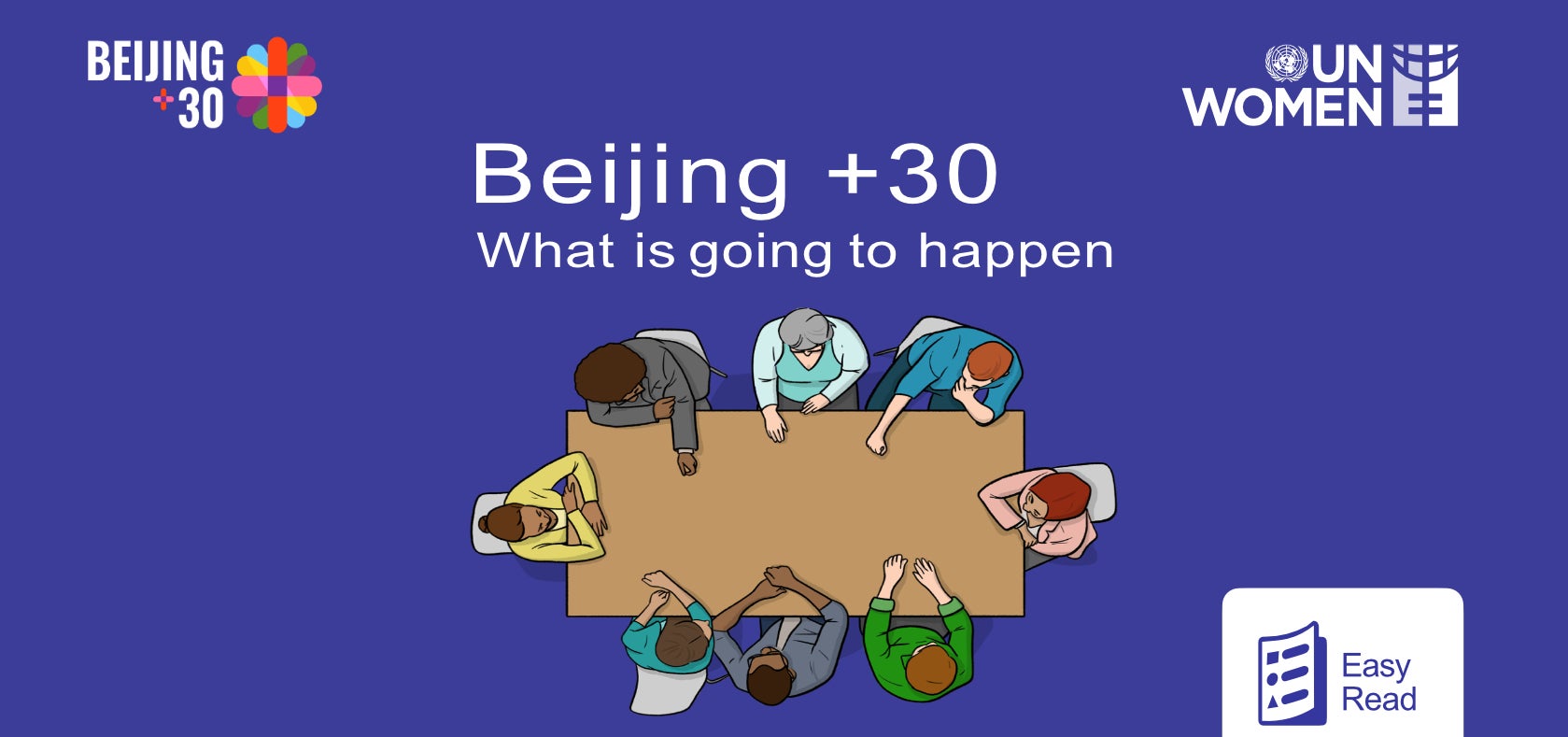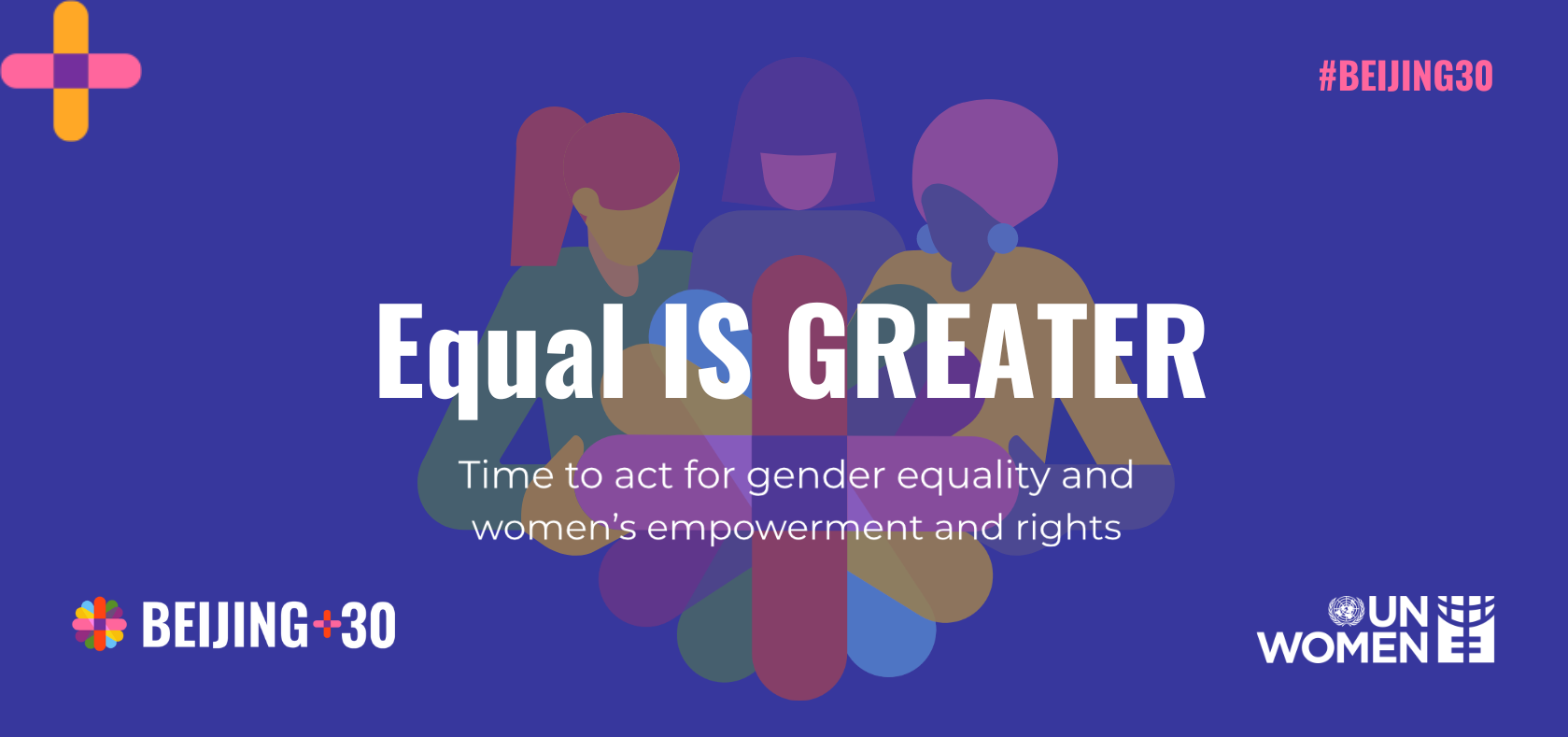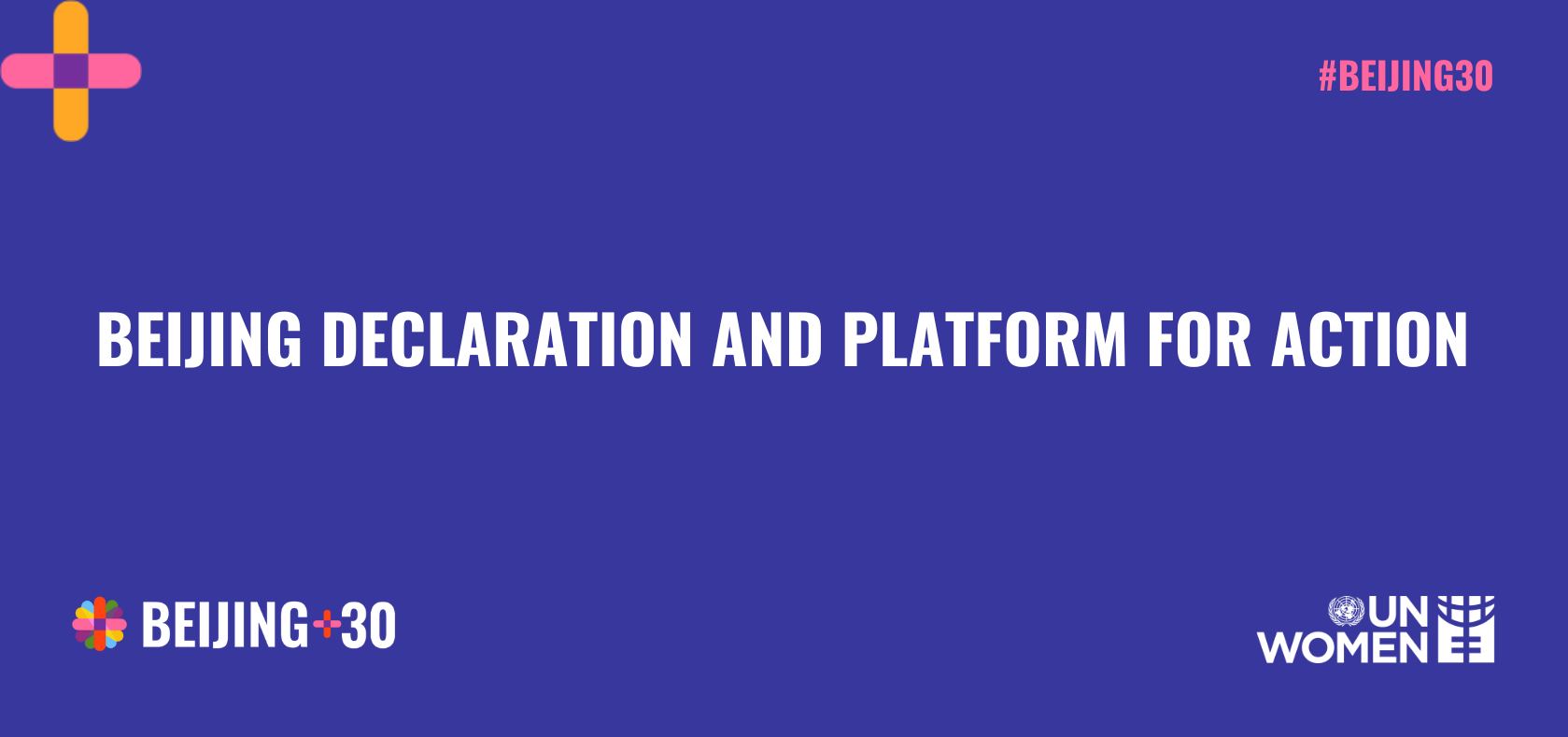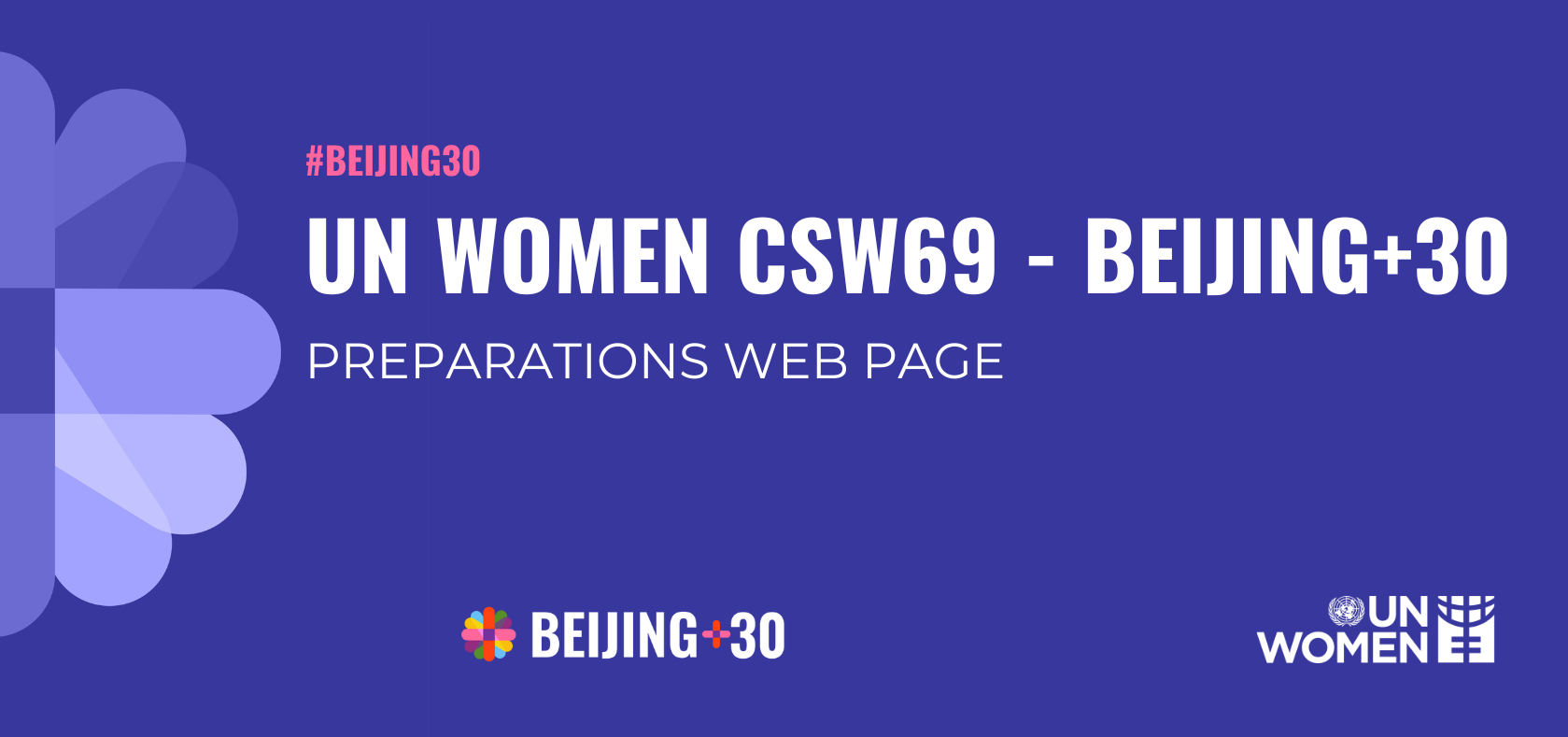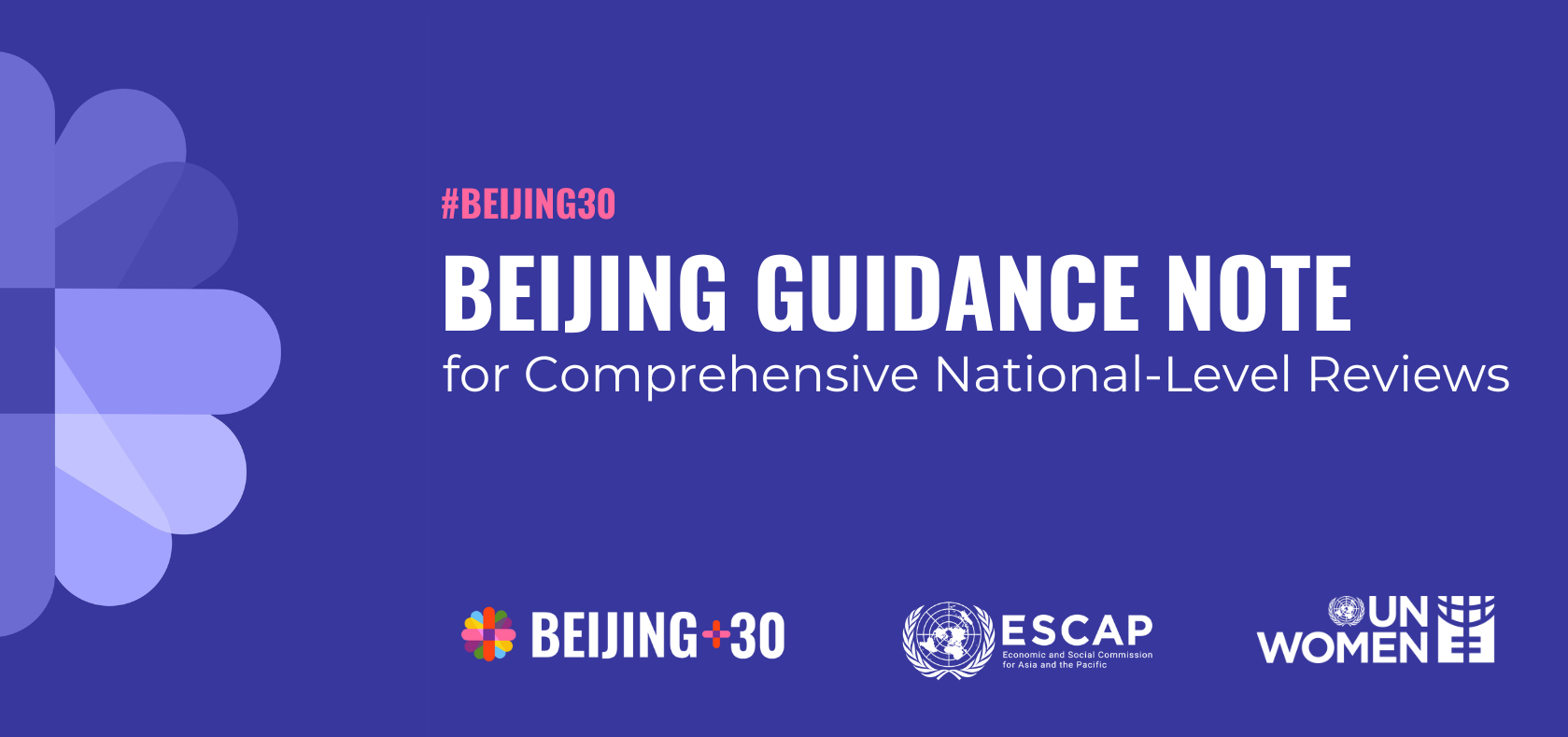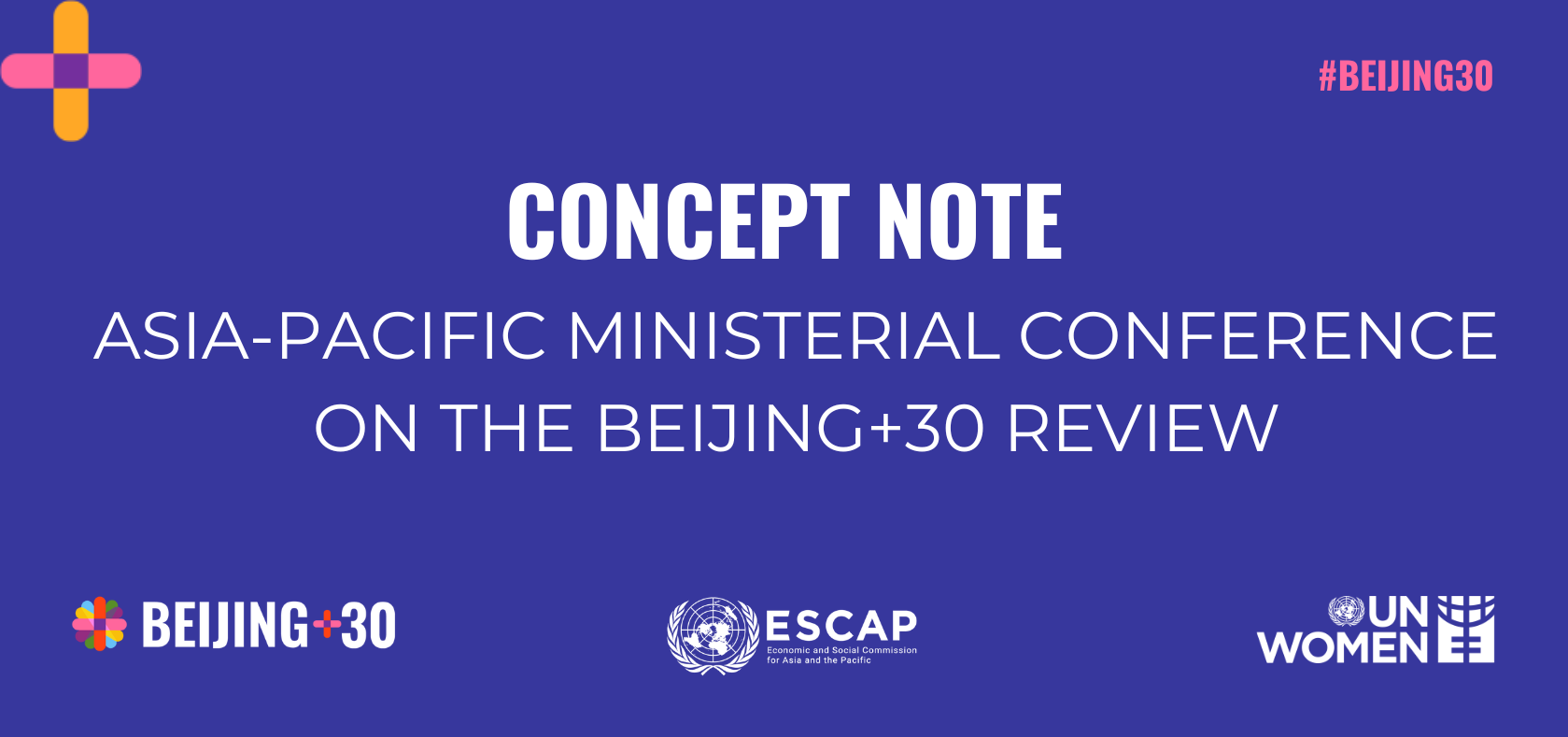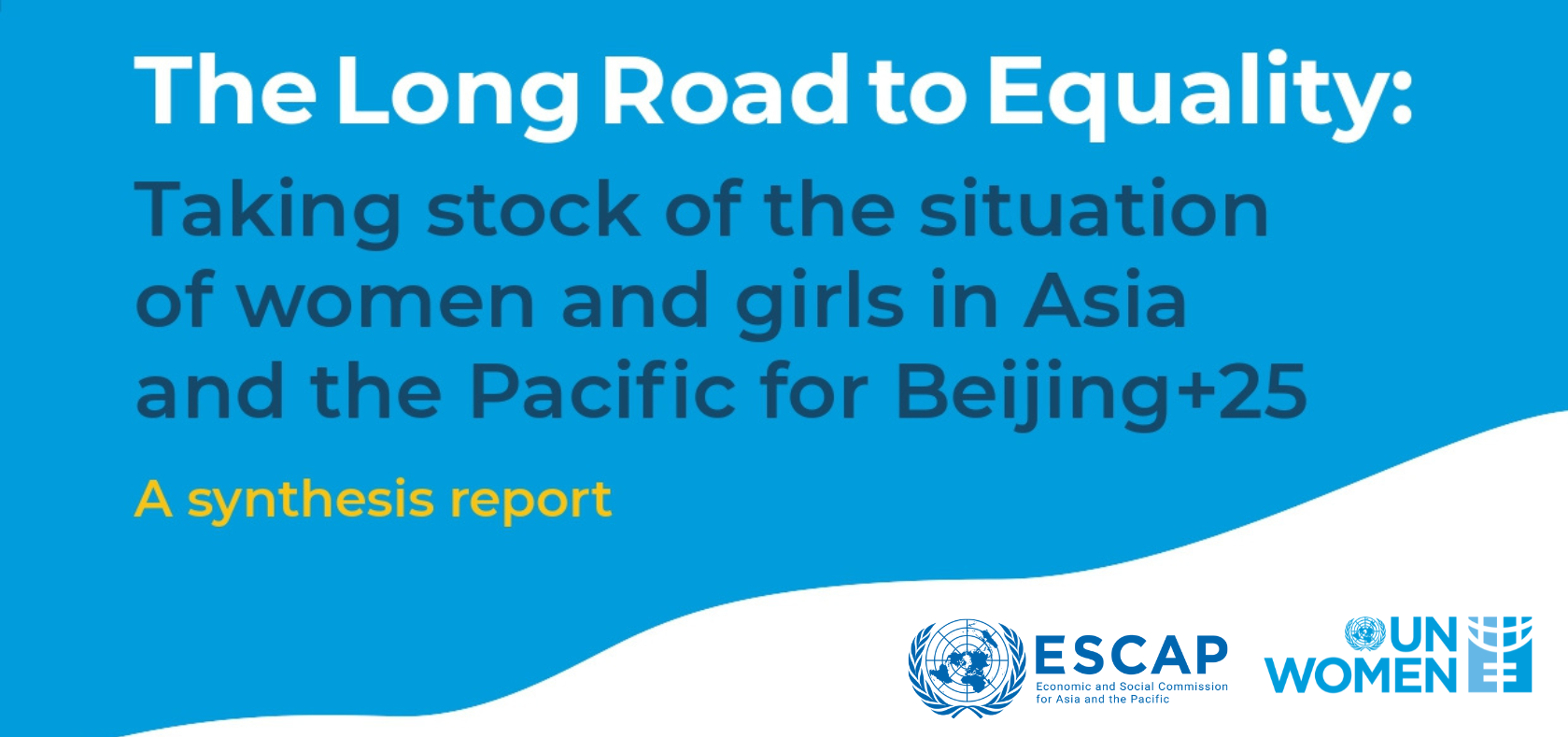Beijing+30 in Asia Pacific
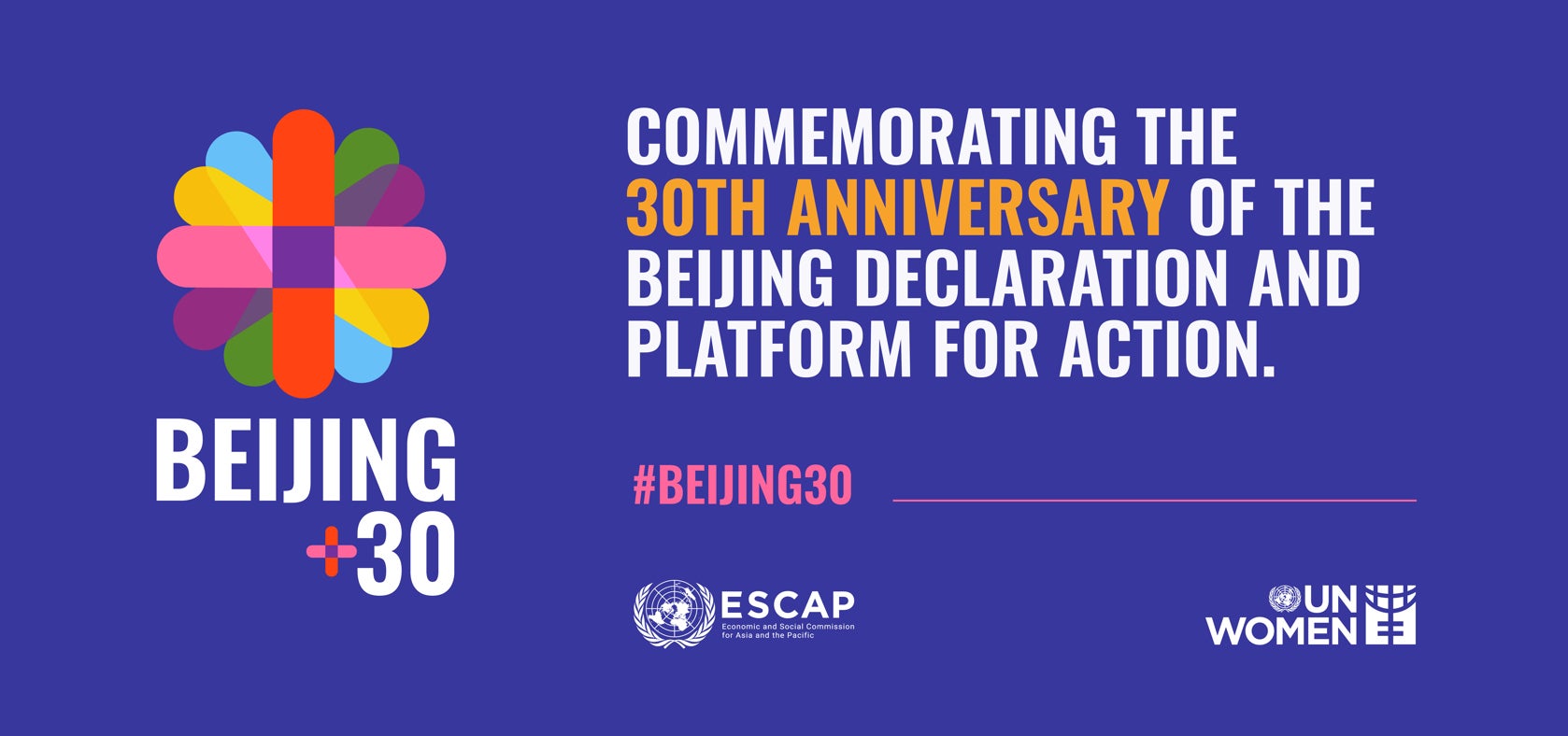
In 2025, the global community will mark the thirtieth anniversary of the Fourth World Conference on Women and the adoption of the Beijing Declaration and Platform for Action (1995). The Beijing Declaration is a global policy framework and blueprint for realizing gender equality and the empowerment of women and girls everywhere.
Adopted in 1995 by 189 countries, the Beijing Declaration calls upon governments, the international community and civil society, including non-governmental organizations and the private sector, to take strategic action.
The 30th anniversary of Beijing opens new opportunities to reconnect, regenerate commitment, charge up political will and mobilize the public and to take stock of progress made and actions required to address barriers to gender equality and implementing the Sustainable Development Goals (SDGs) by 2030.
Check this space for updates and follow the hashtag #Beijing30 to join the conversation!
Journey to Beijing+30. View full image
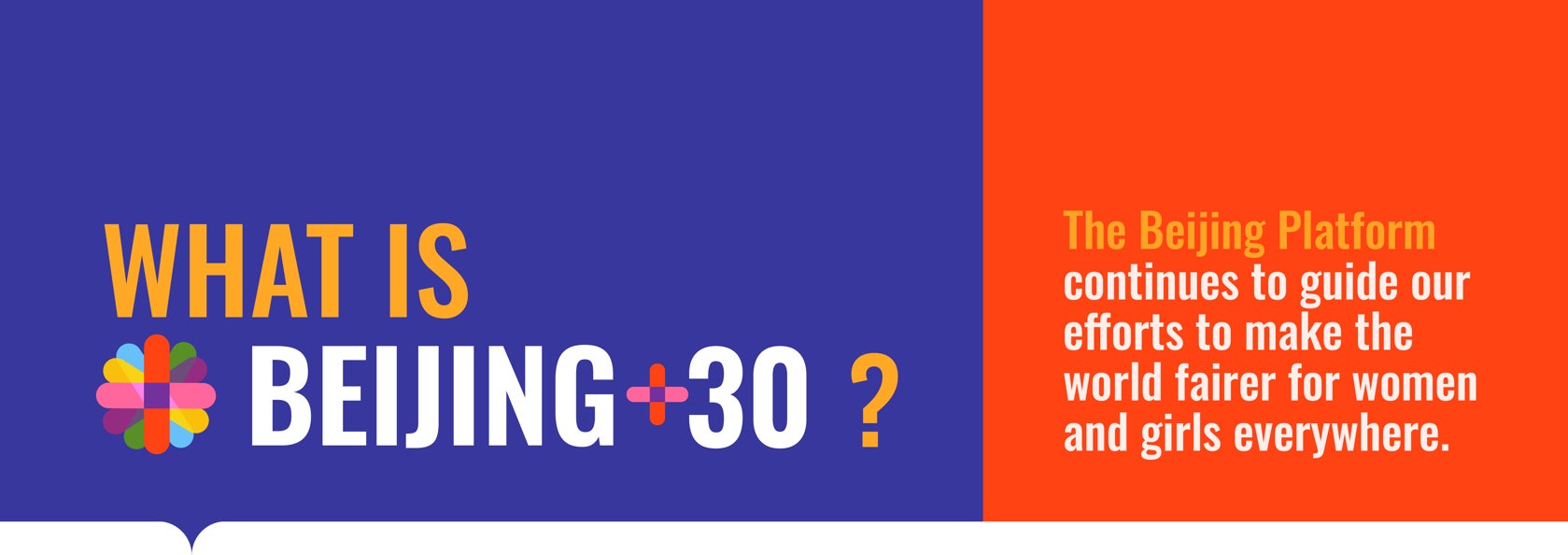
Check our infographic "What is Beijing+30" here.
To commemorate the 30th anniversary of the adoption of the Beijing Declaration and Platform for Action (BPfA), this toolkit aims to support regional activism and assess progress made in Asia and the Pacific. Read more
The Art for Impact: Beijing+30 Digital Art Exhibition. Read more
Curious about the Beijing Declaration and Platform for Action 30 years on? Let's chat and explore the path to gender equality together.
![]()
As a defining framework for change, the Platform made comprehensive commitments for women under 12 critical areas of concern: poverty, education and training, health, violence, armed conflict, economics, power and decision-making, institutional arrangements, human rights, media, environment, and the girl child.
Read more on the 12 critical areas.
